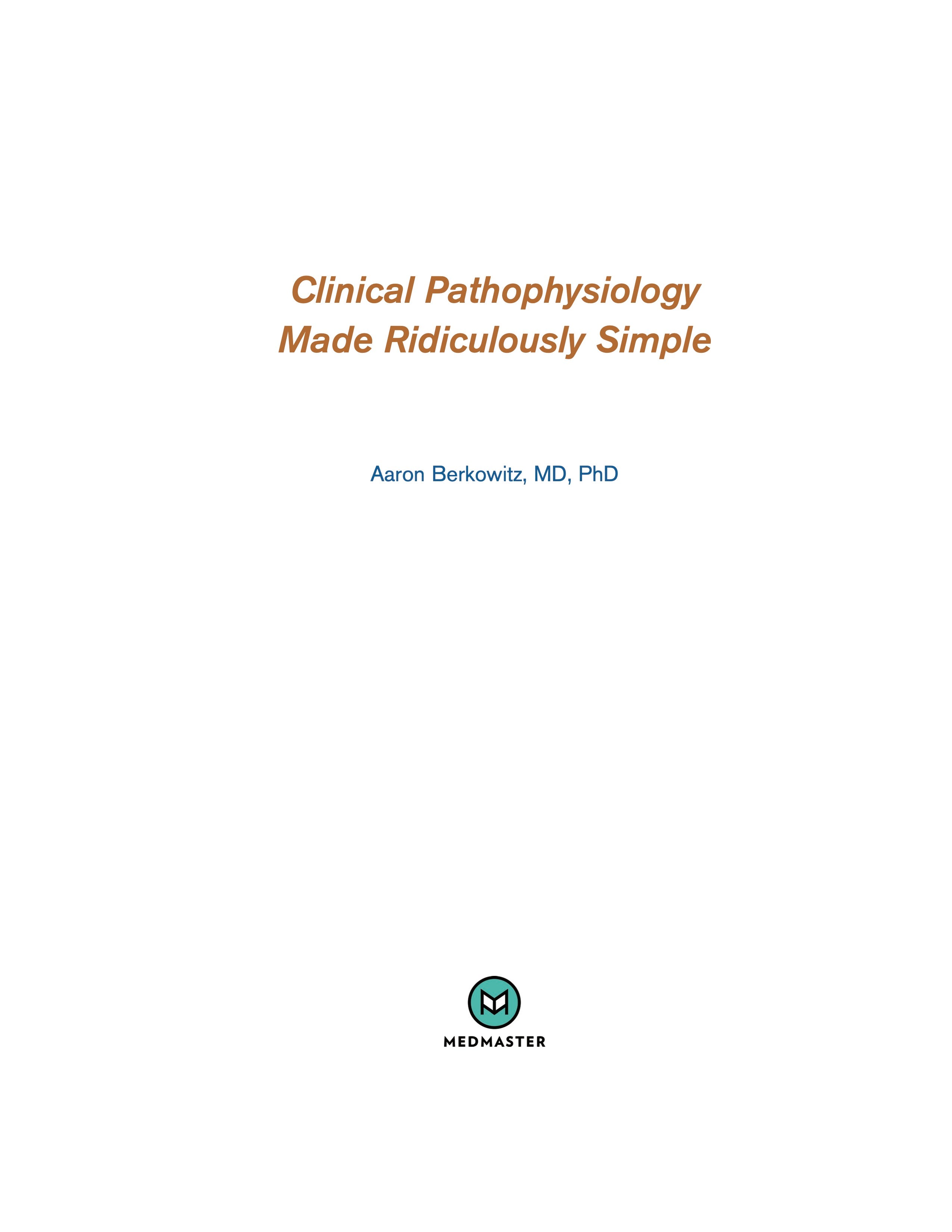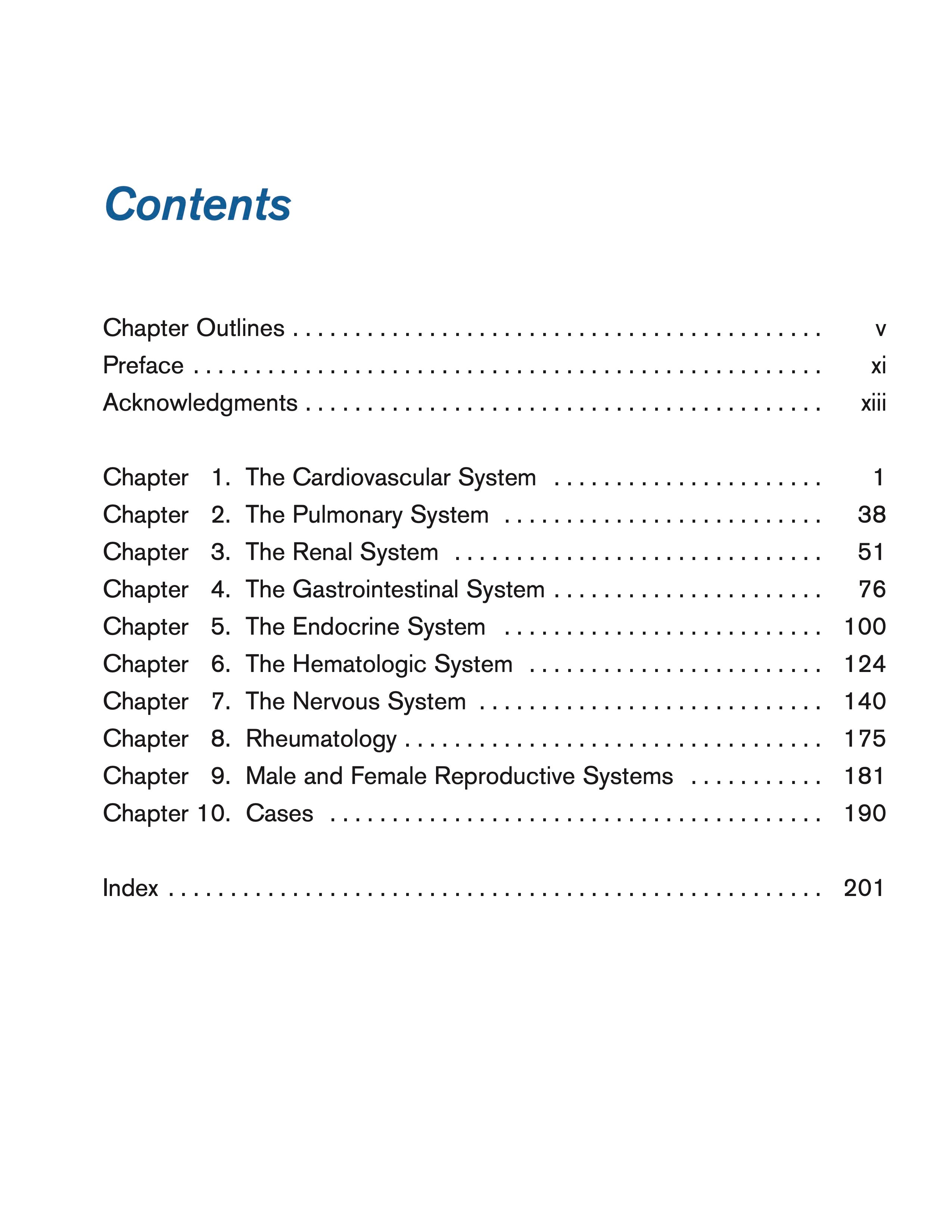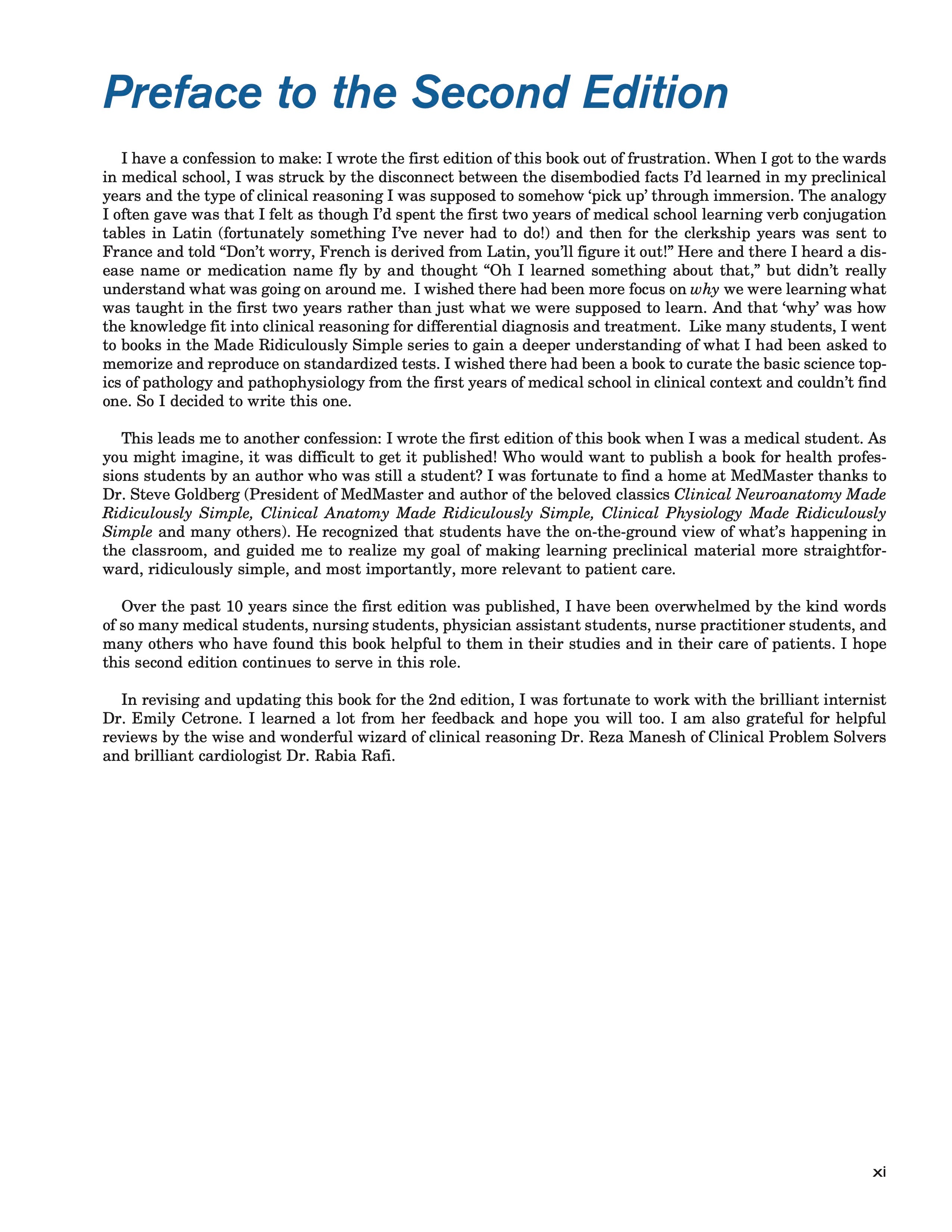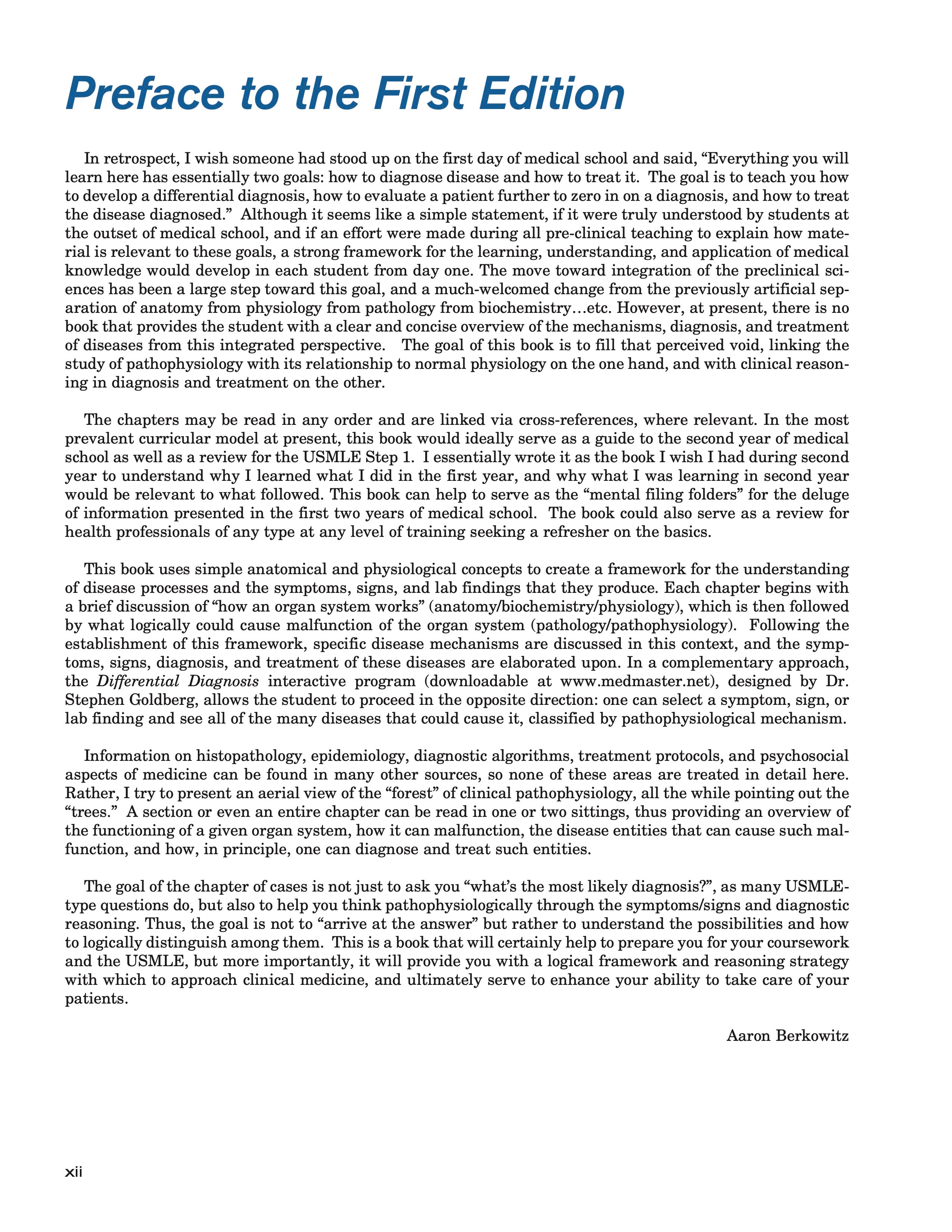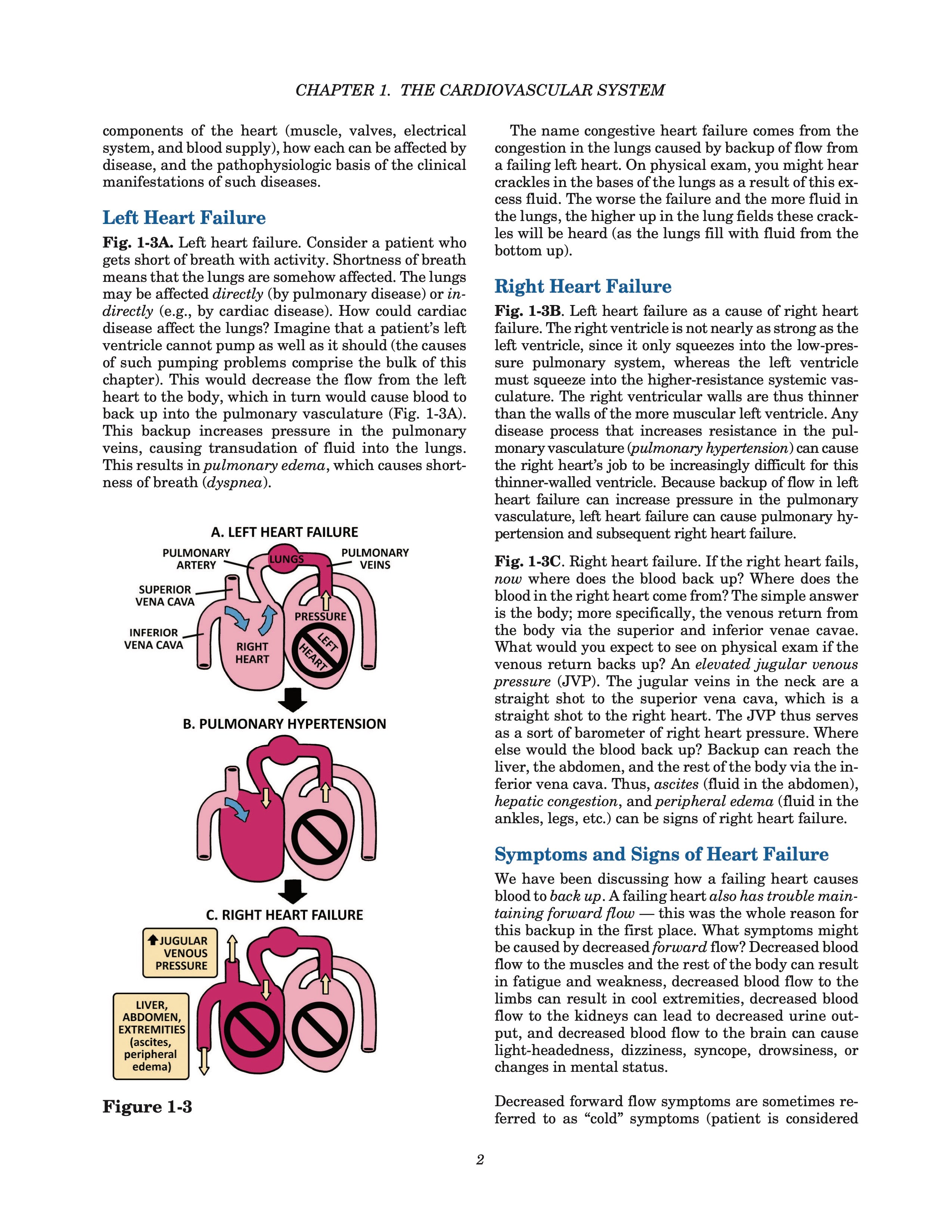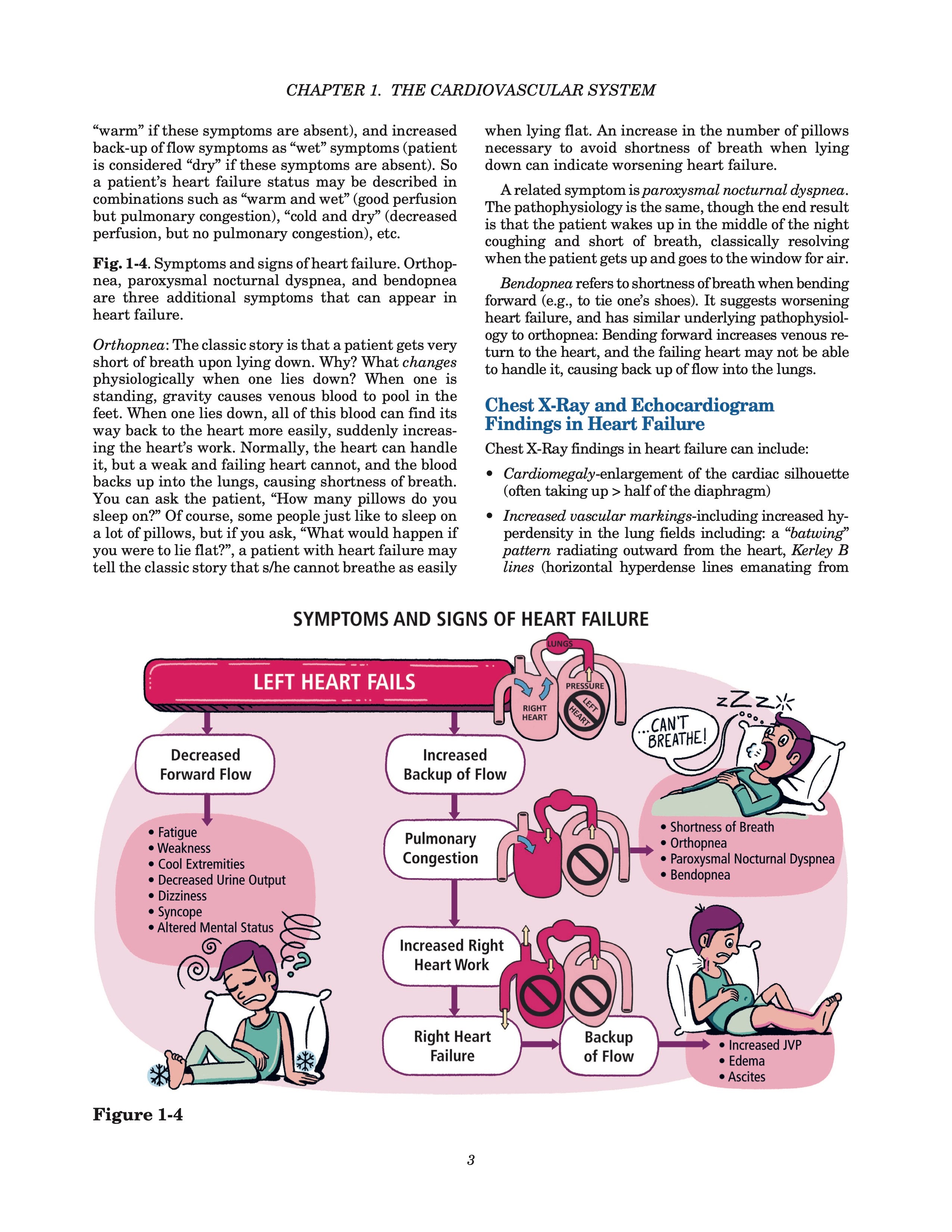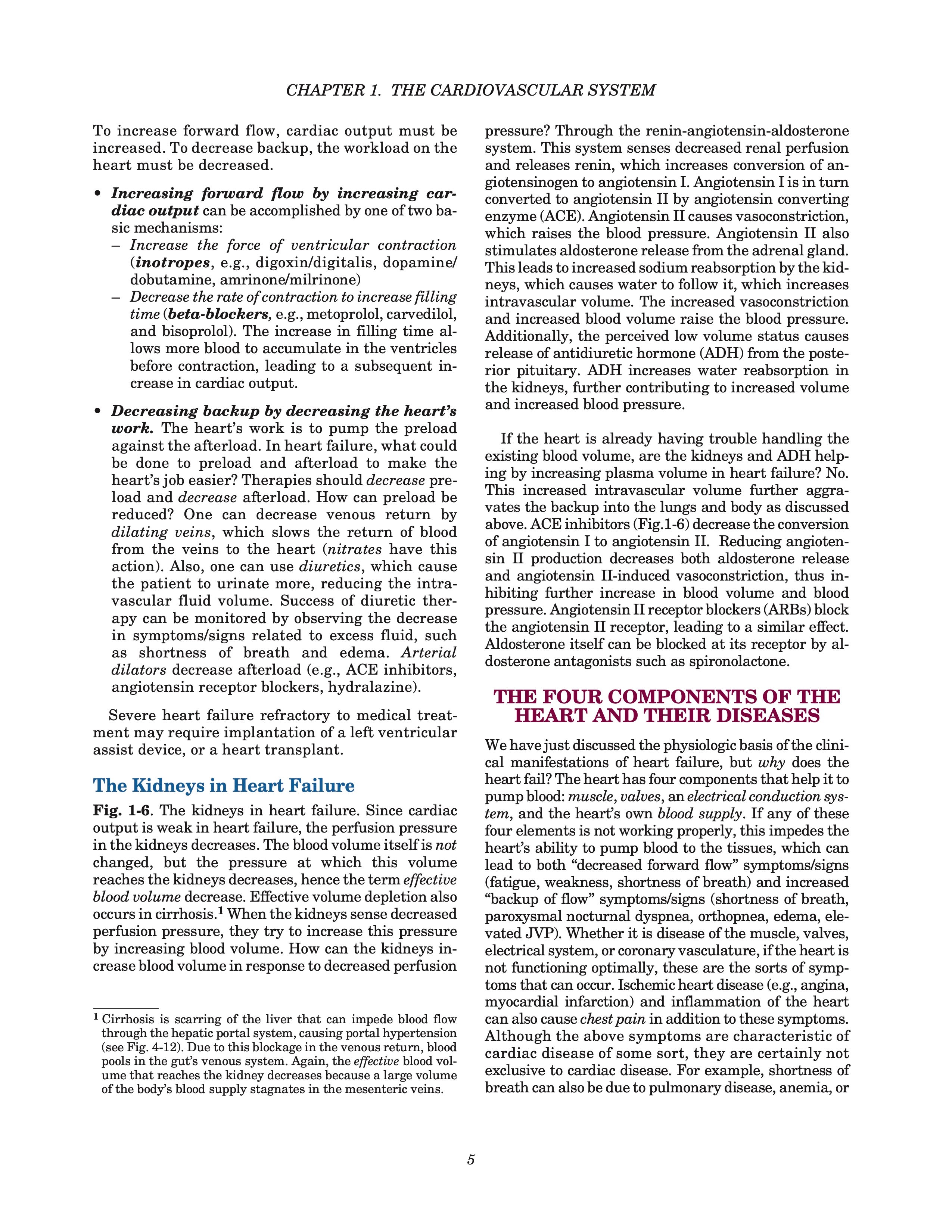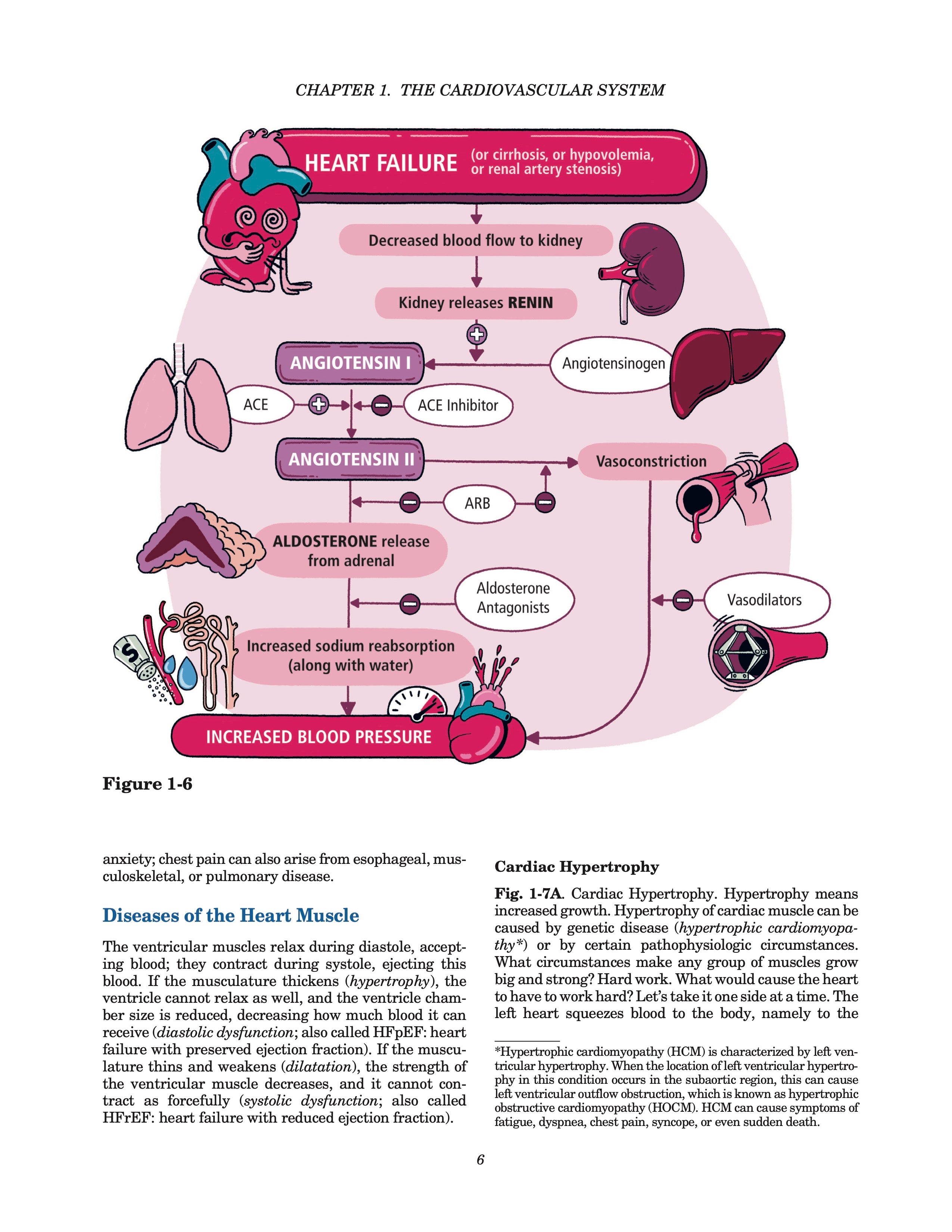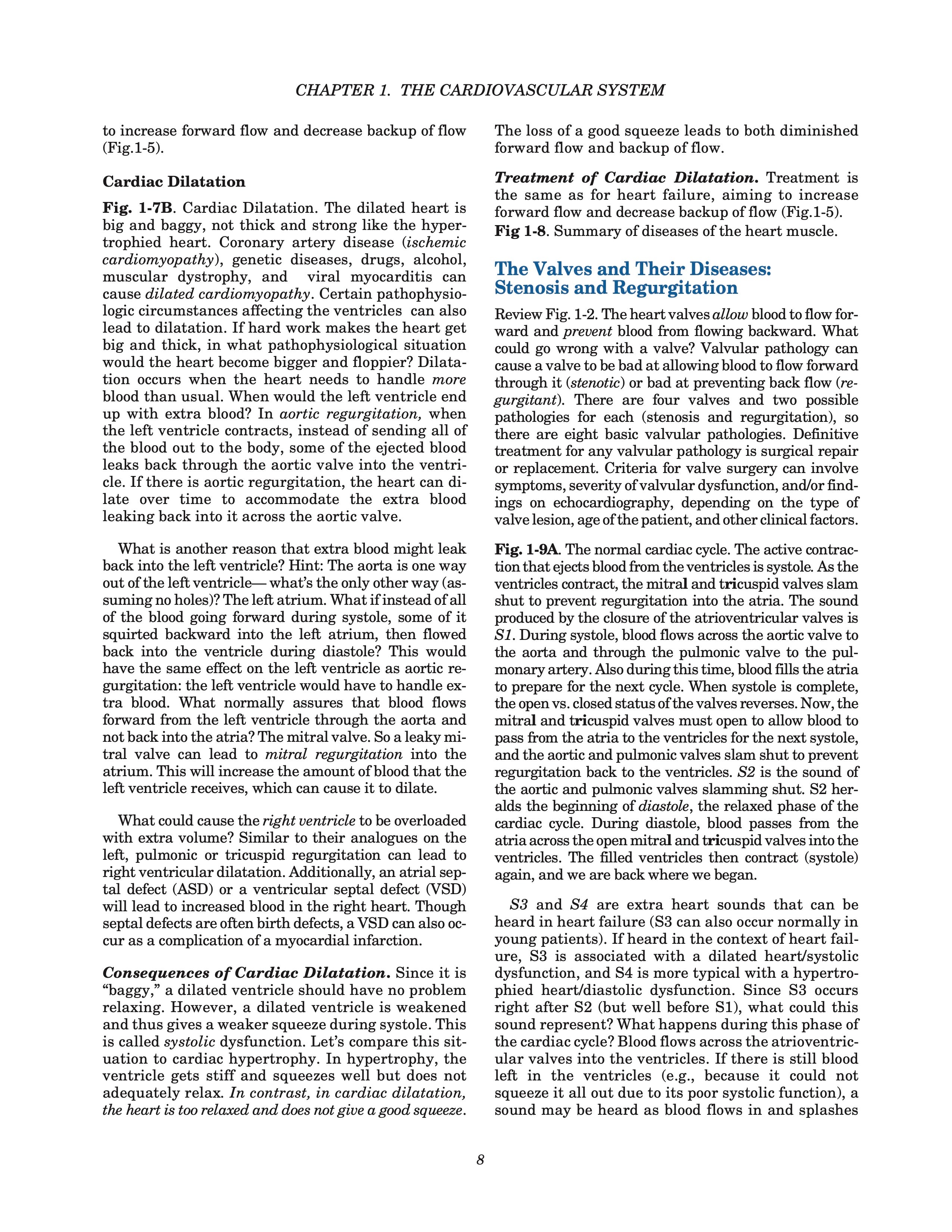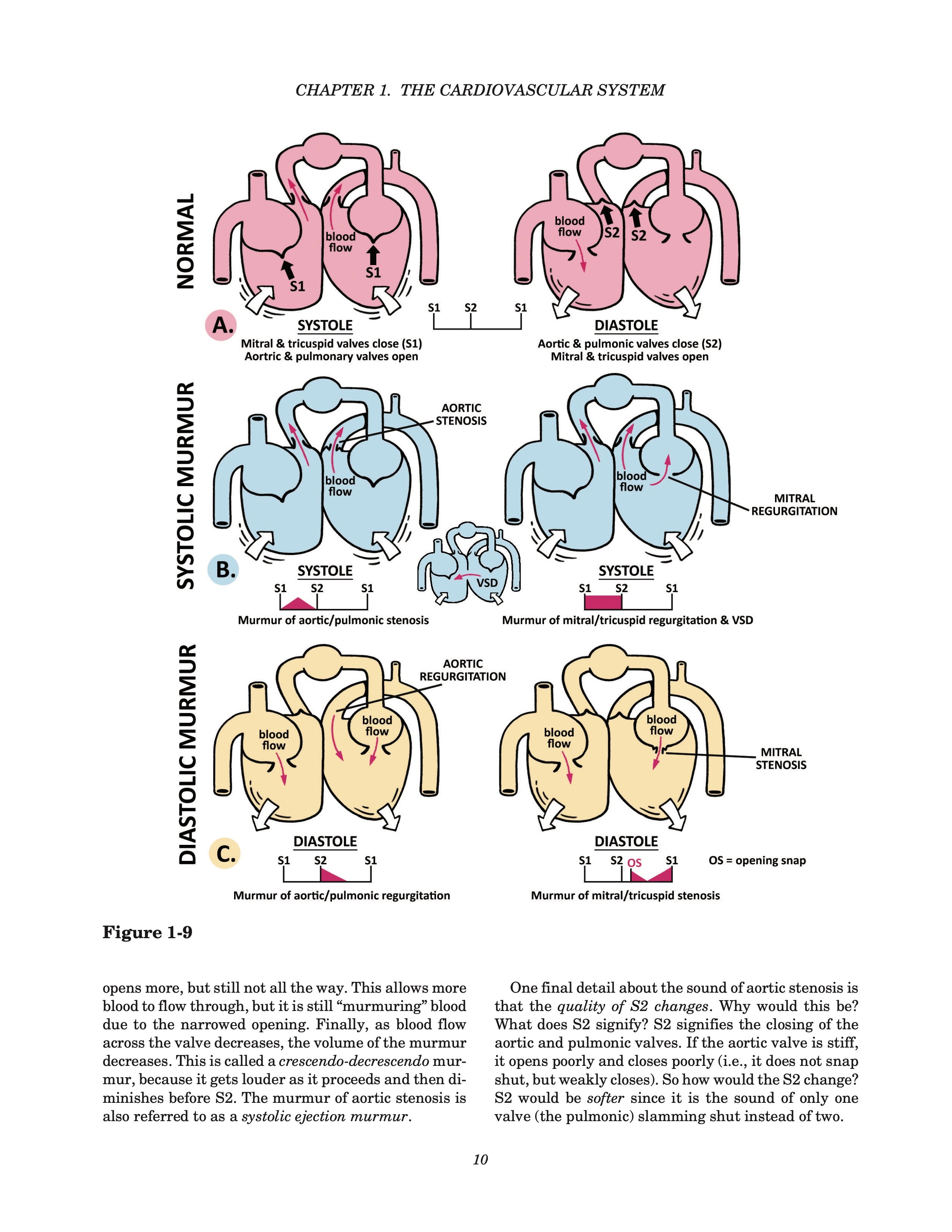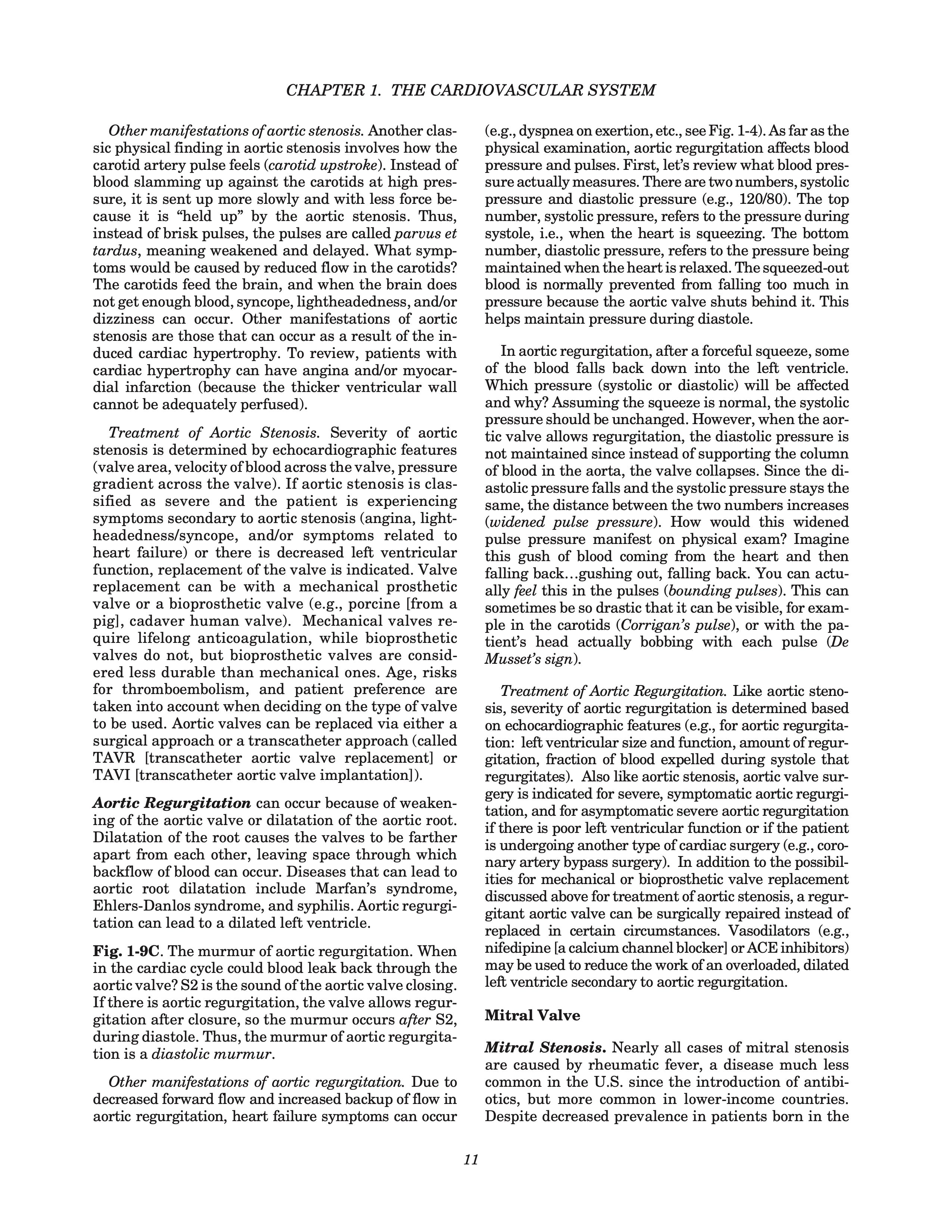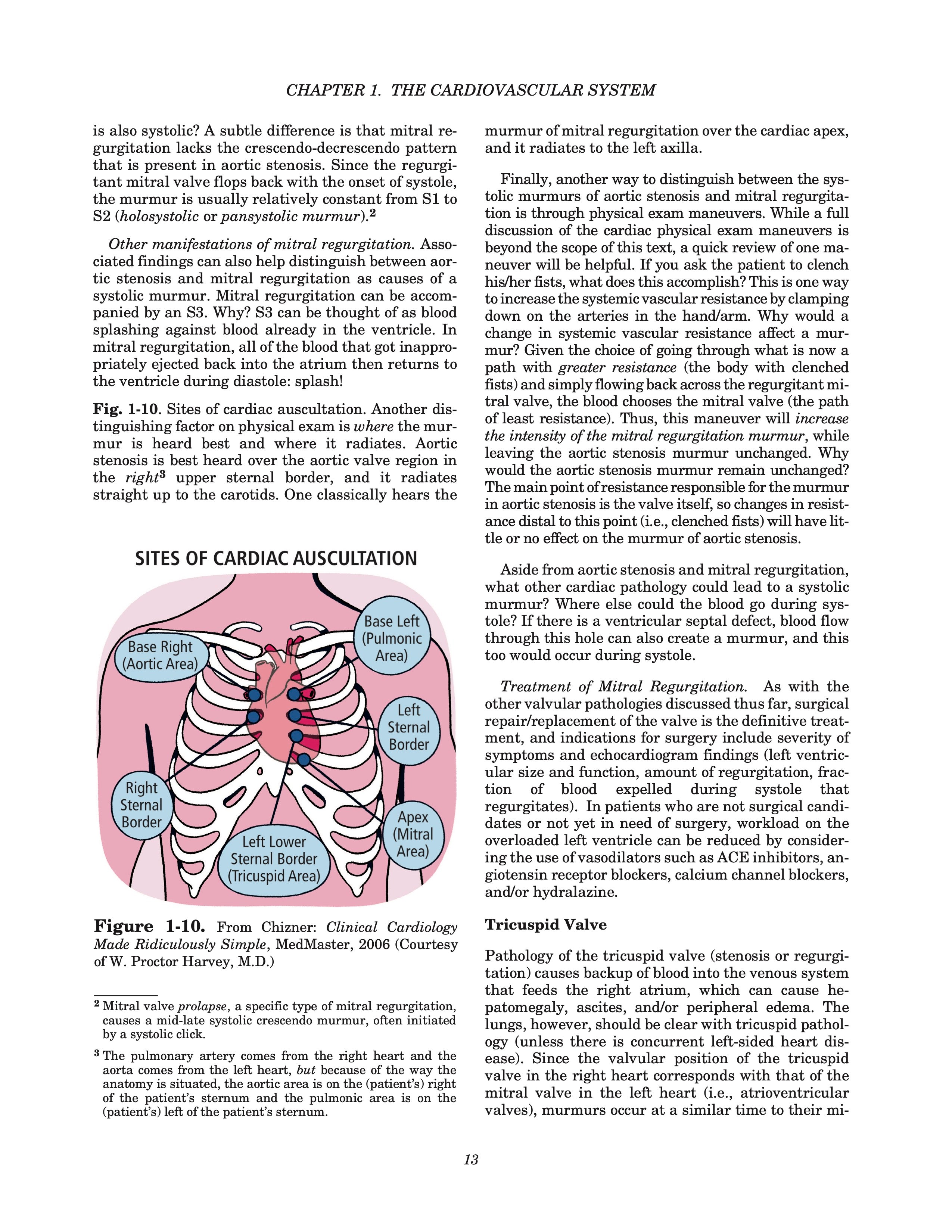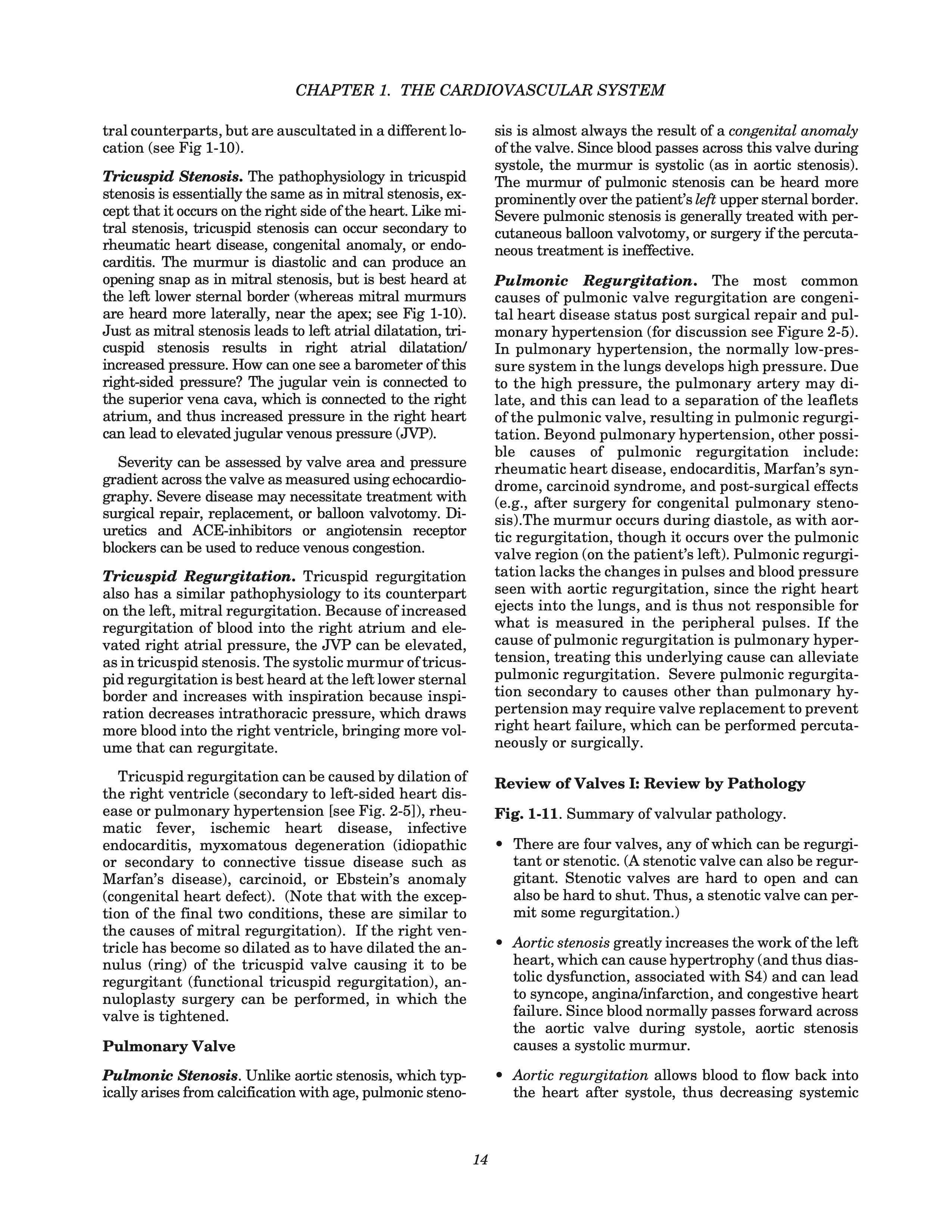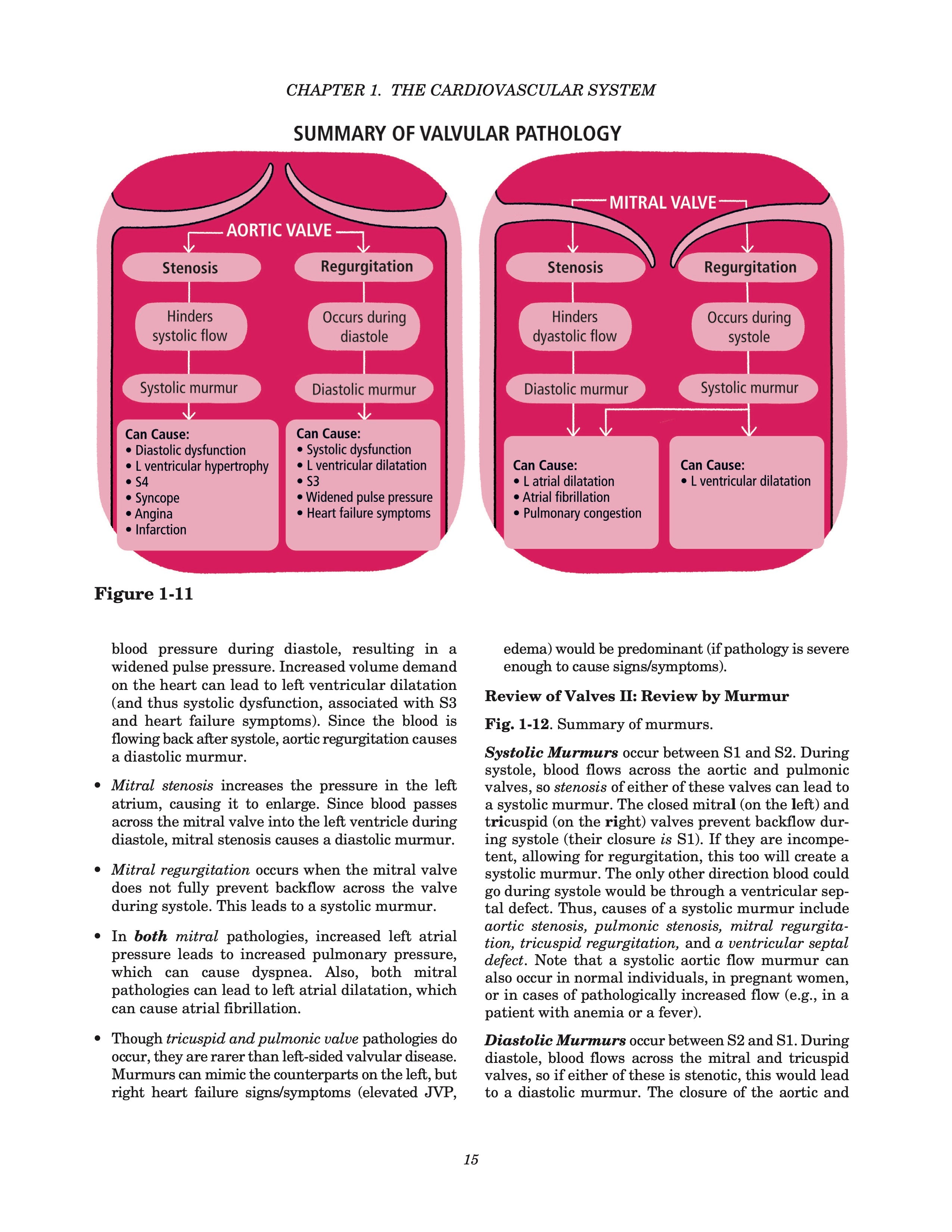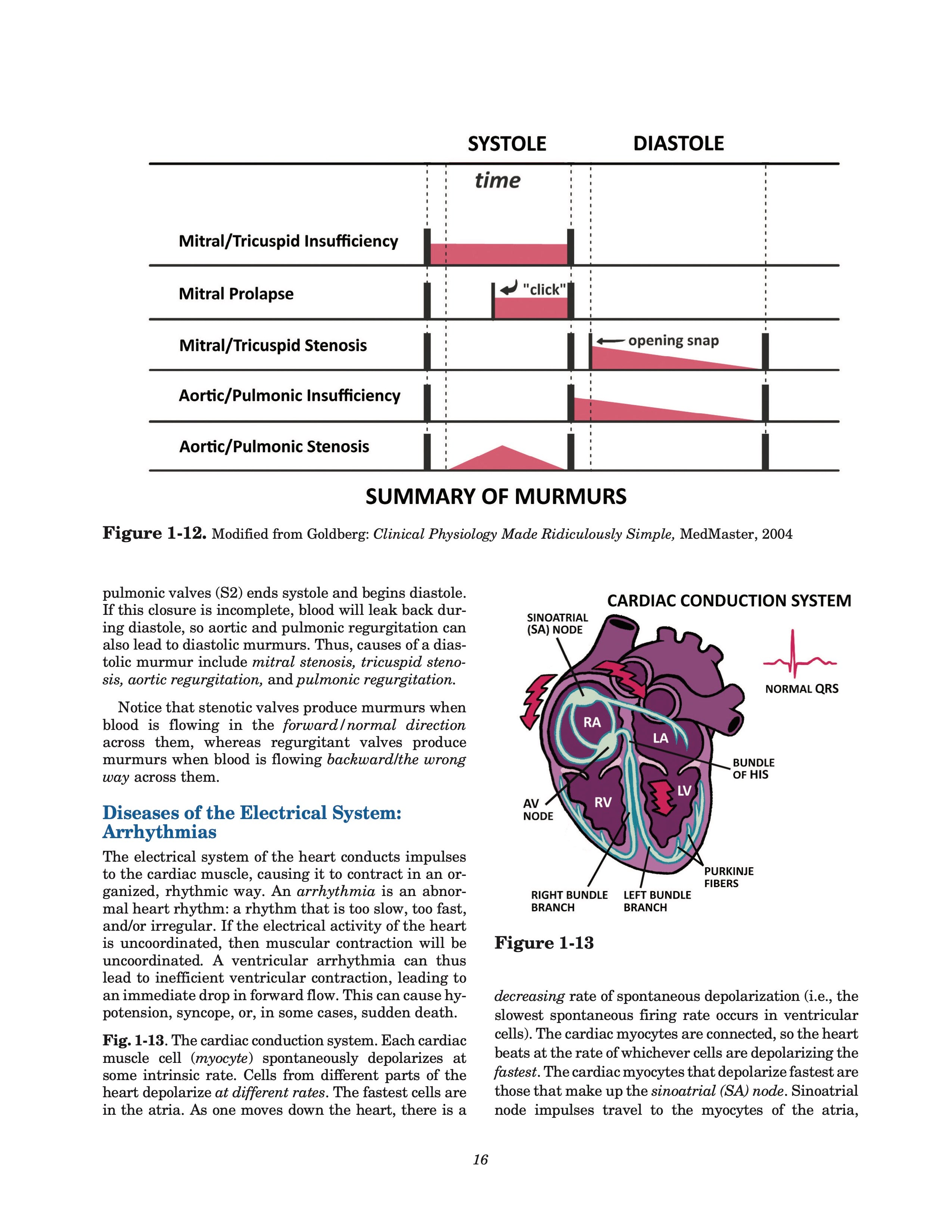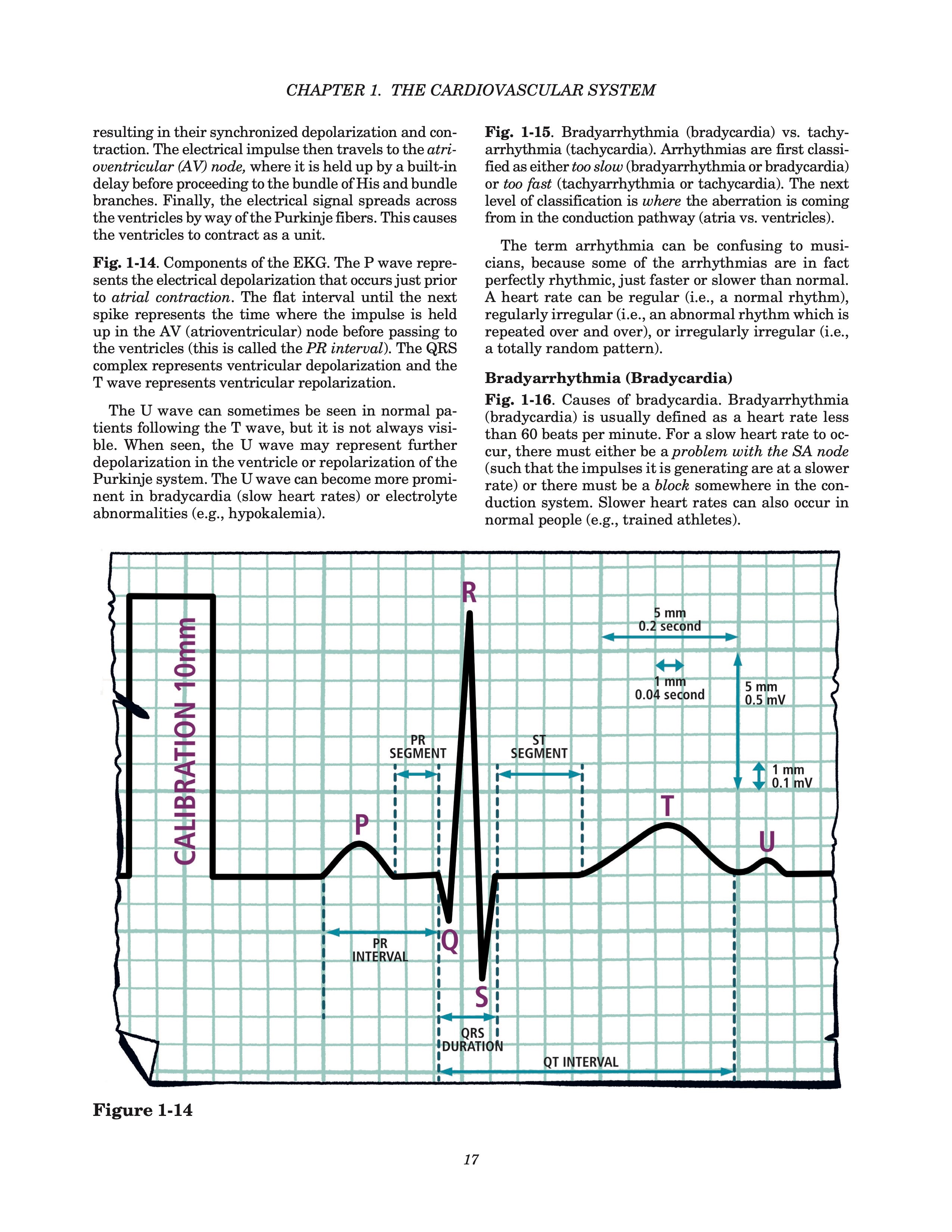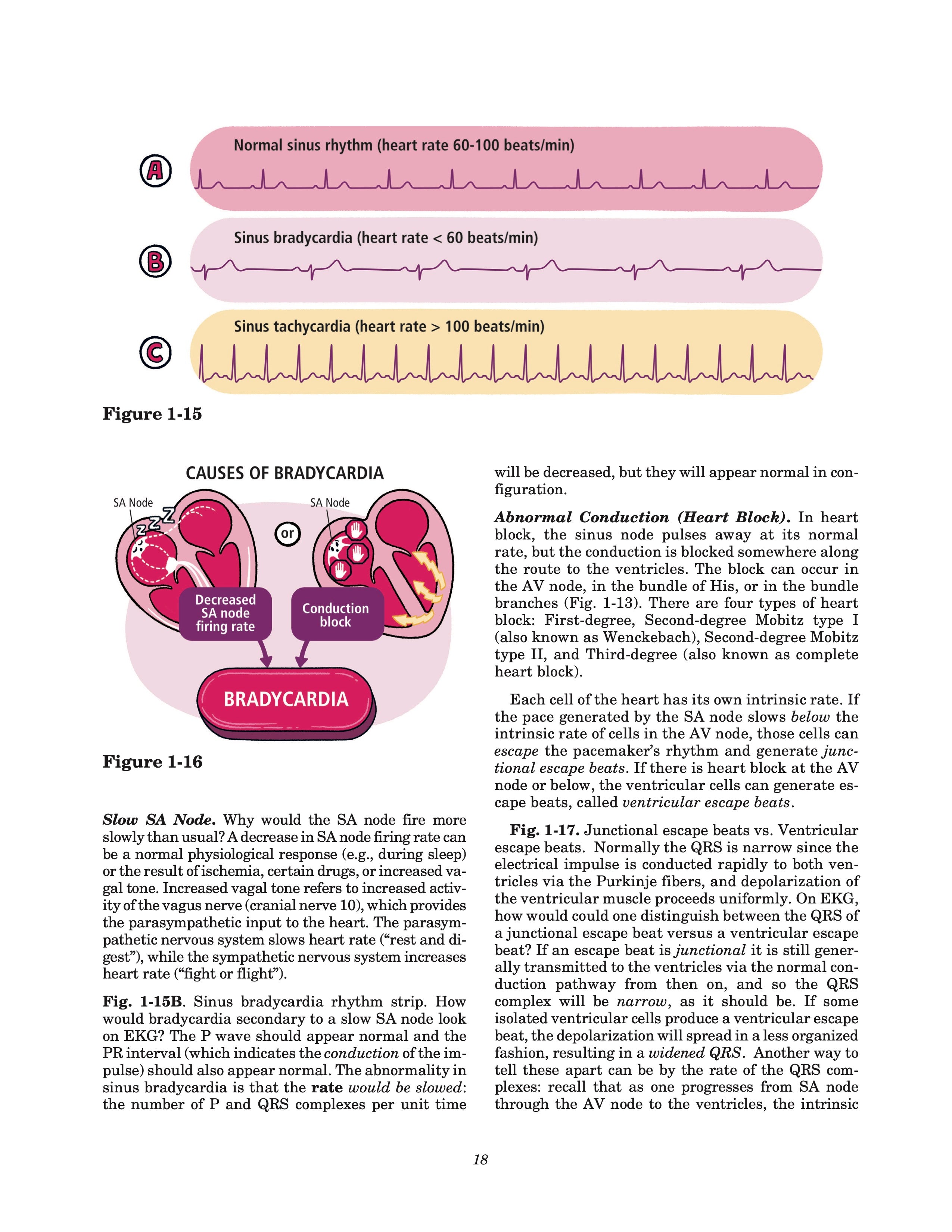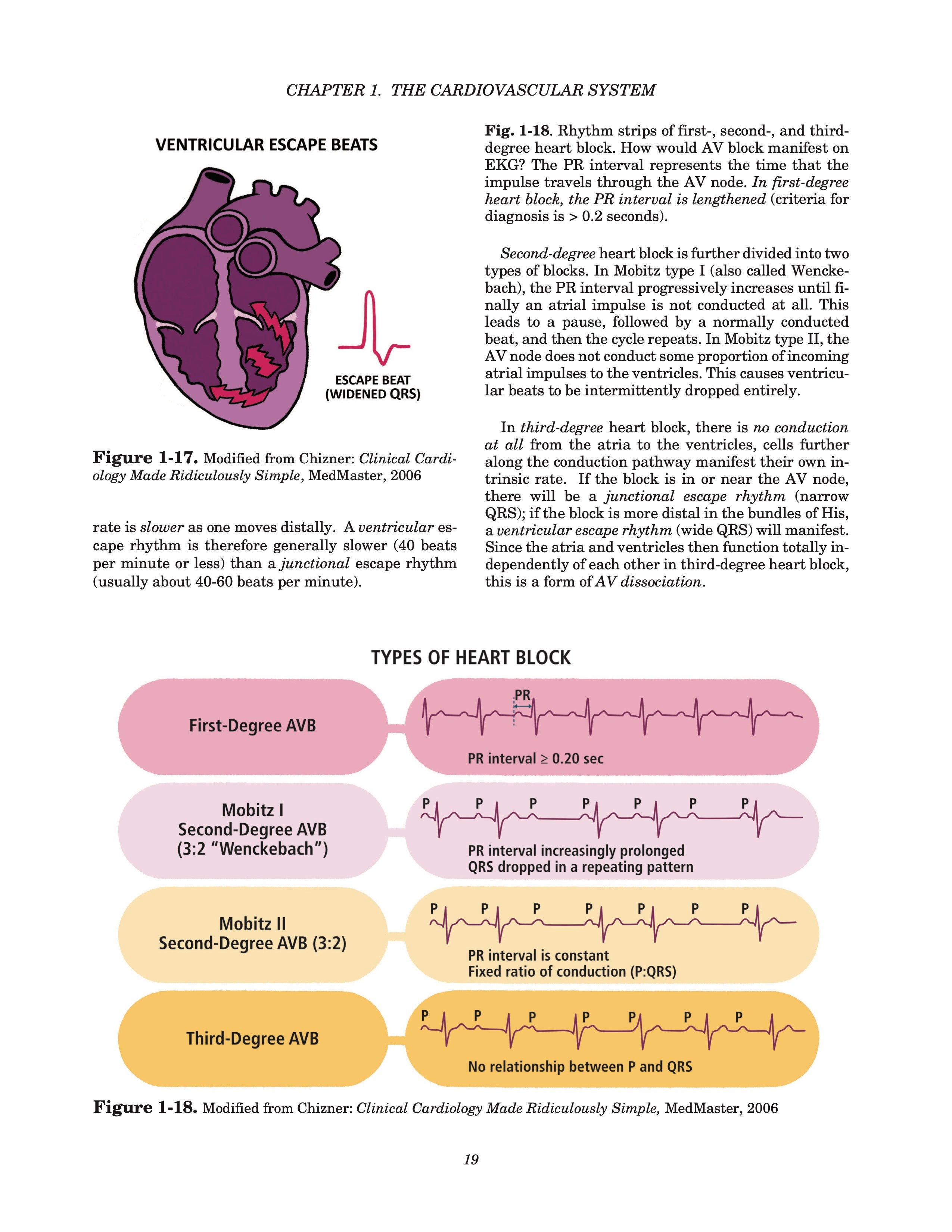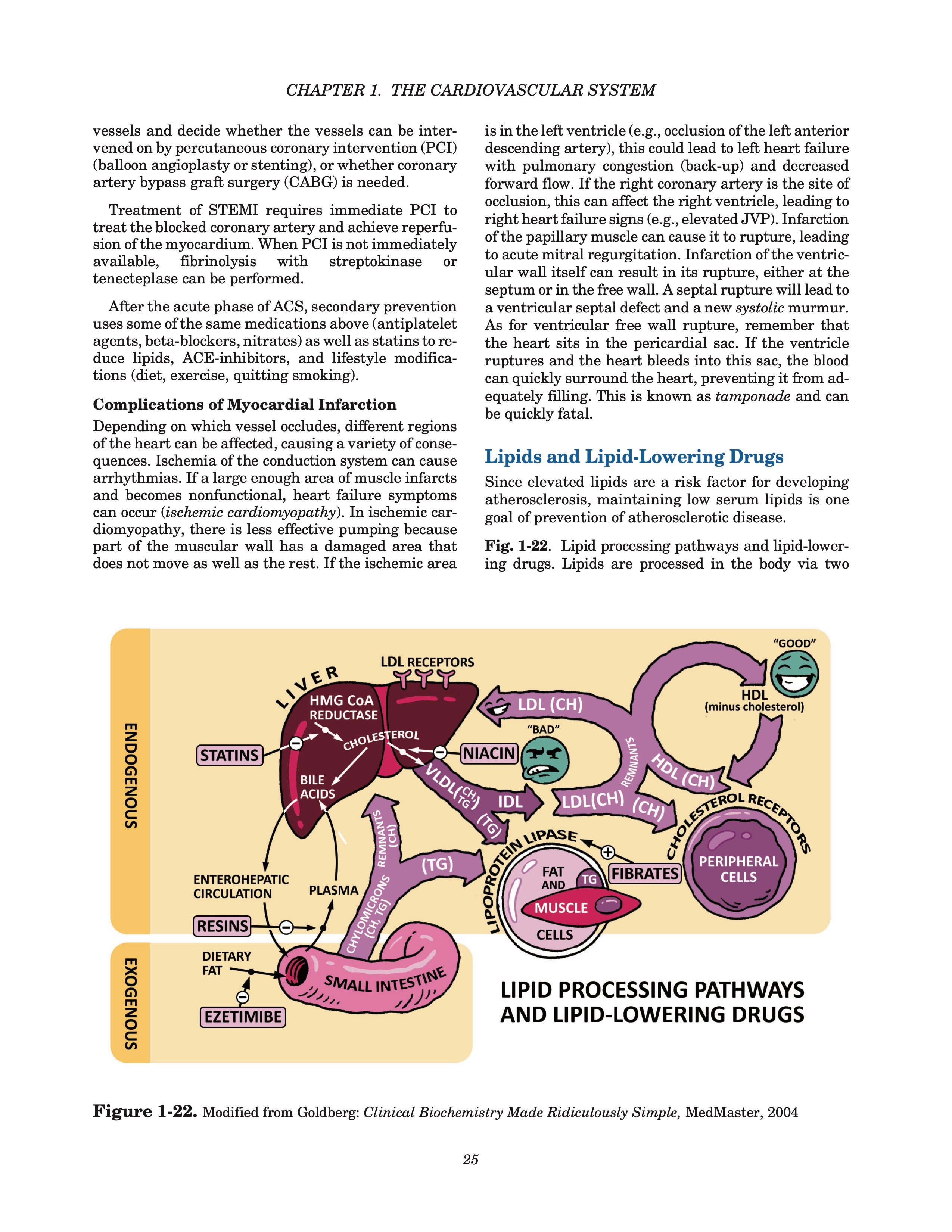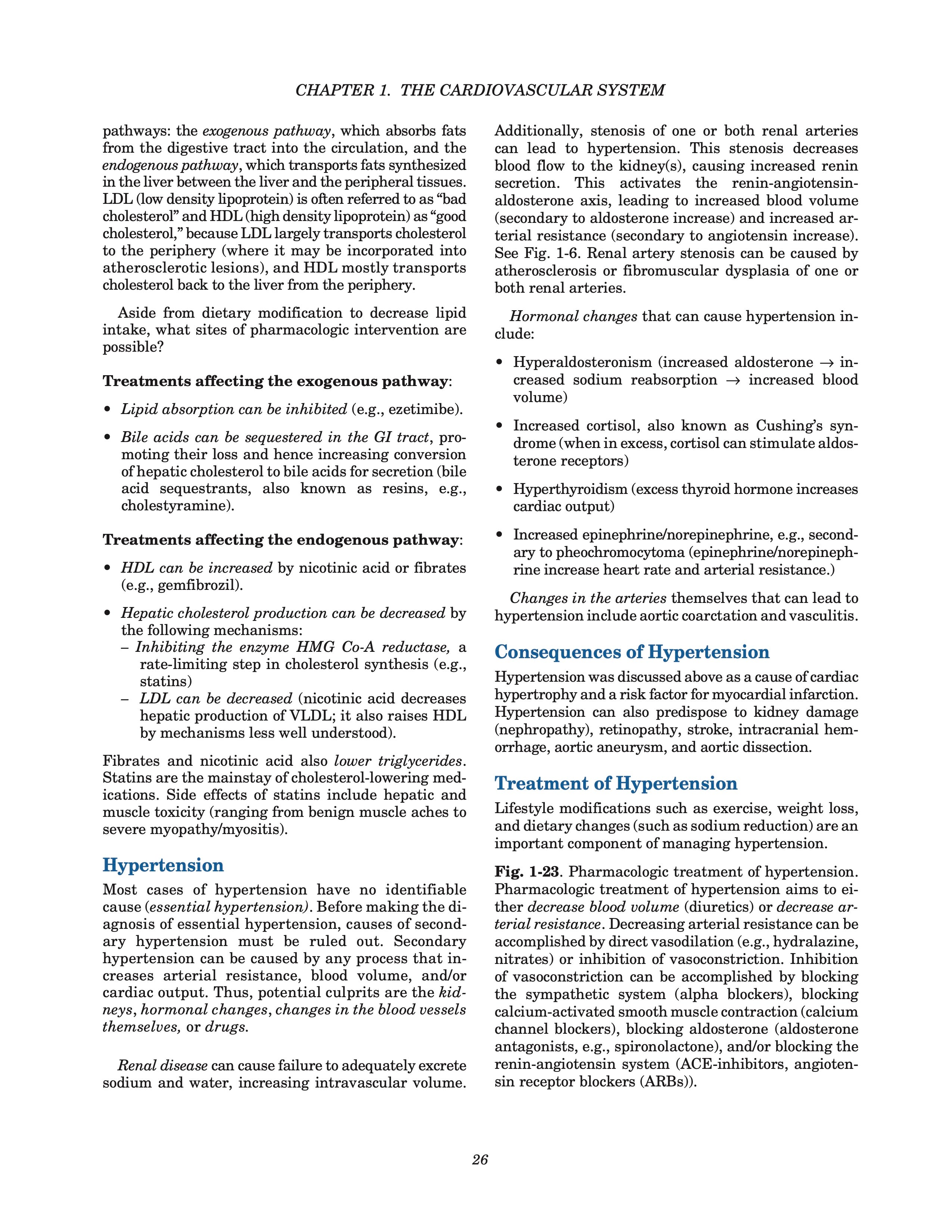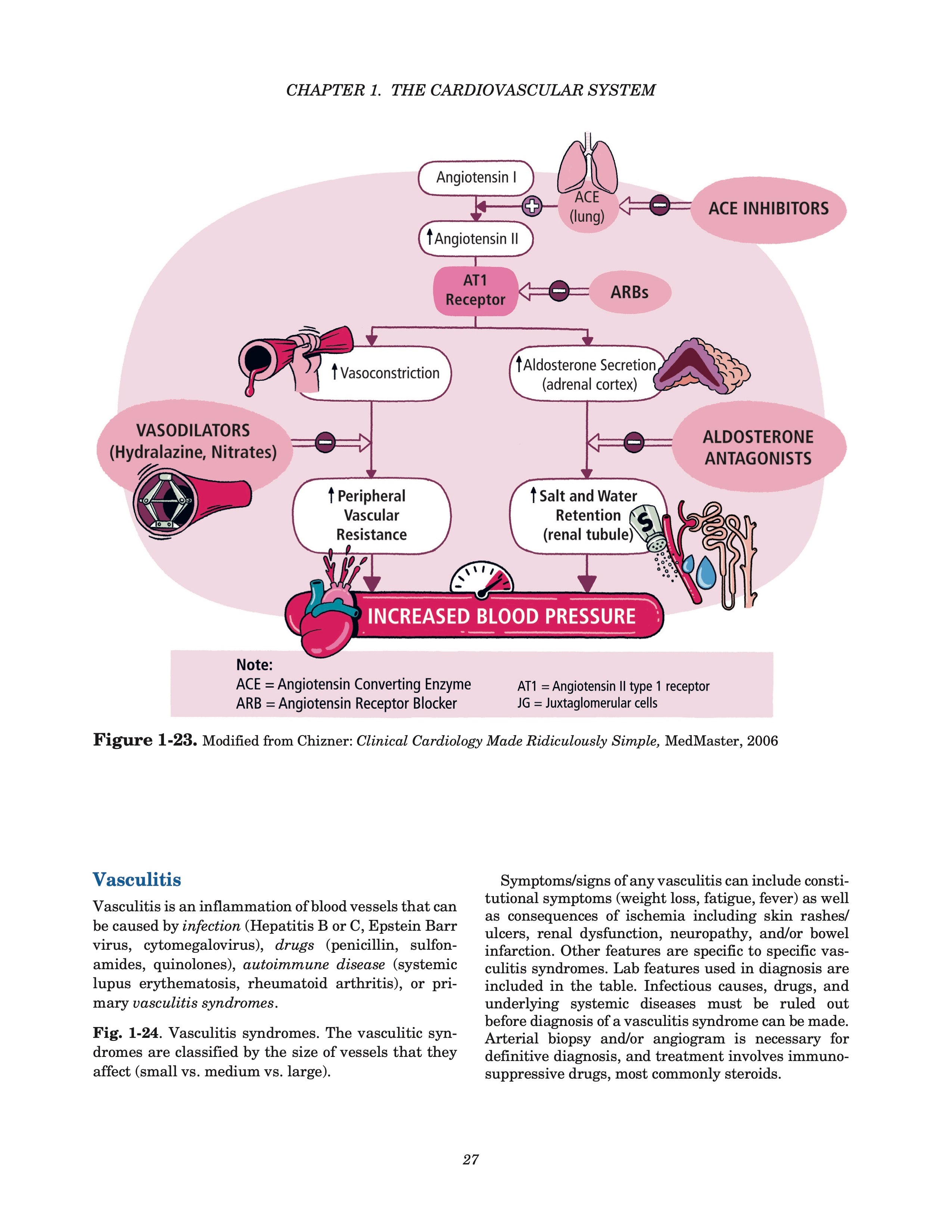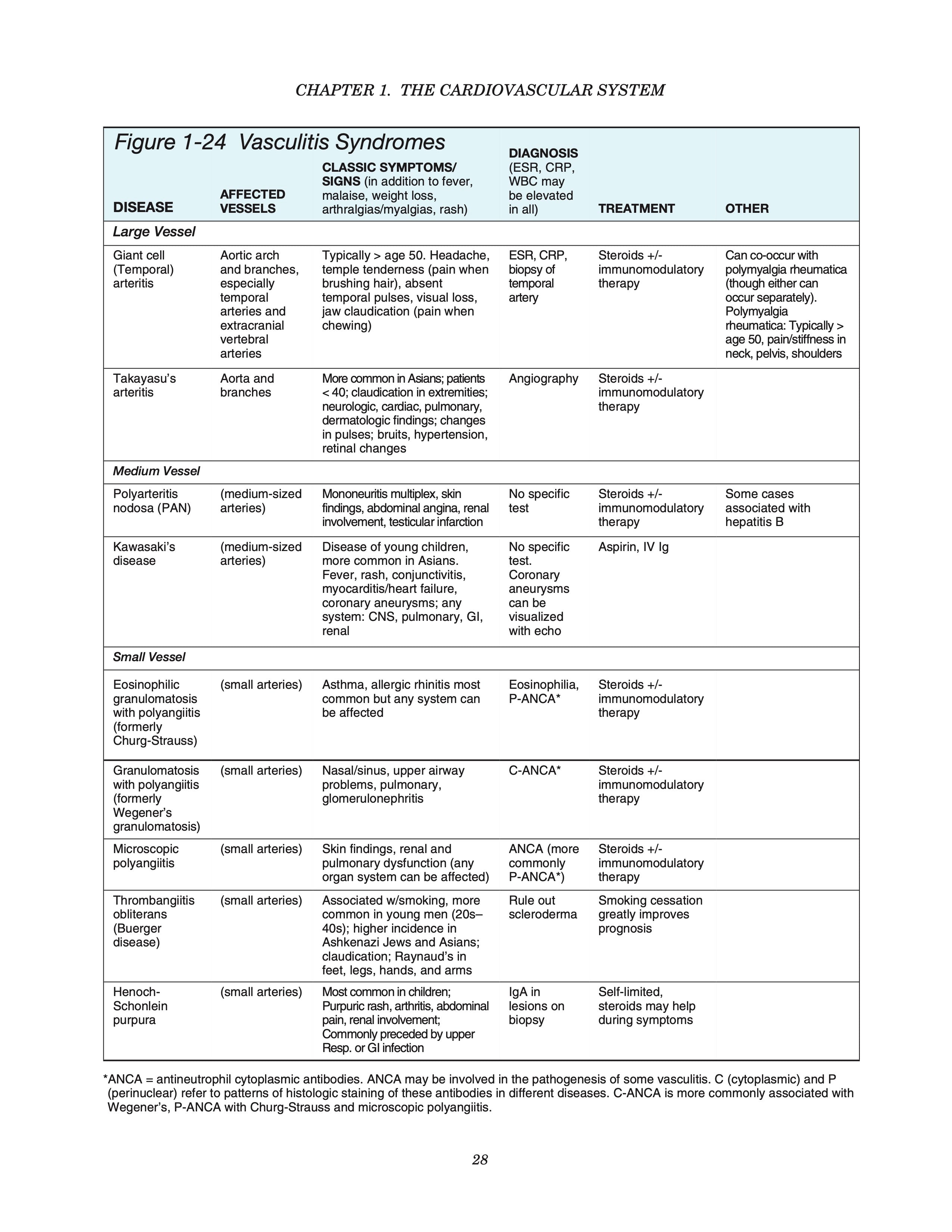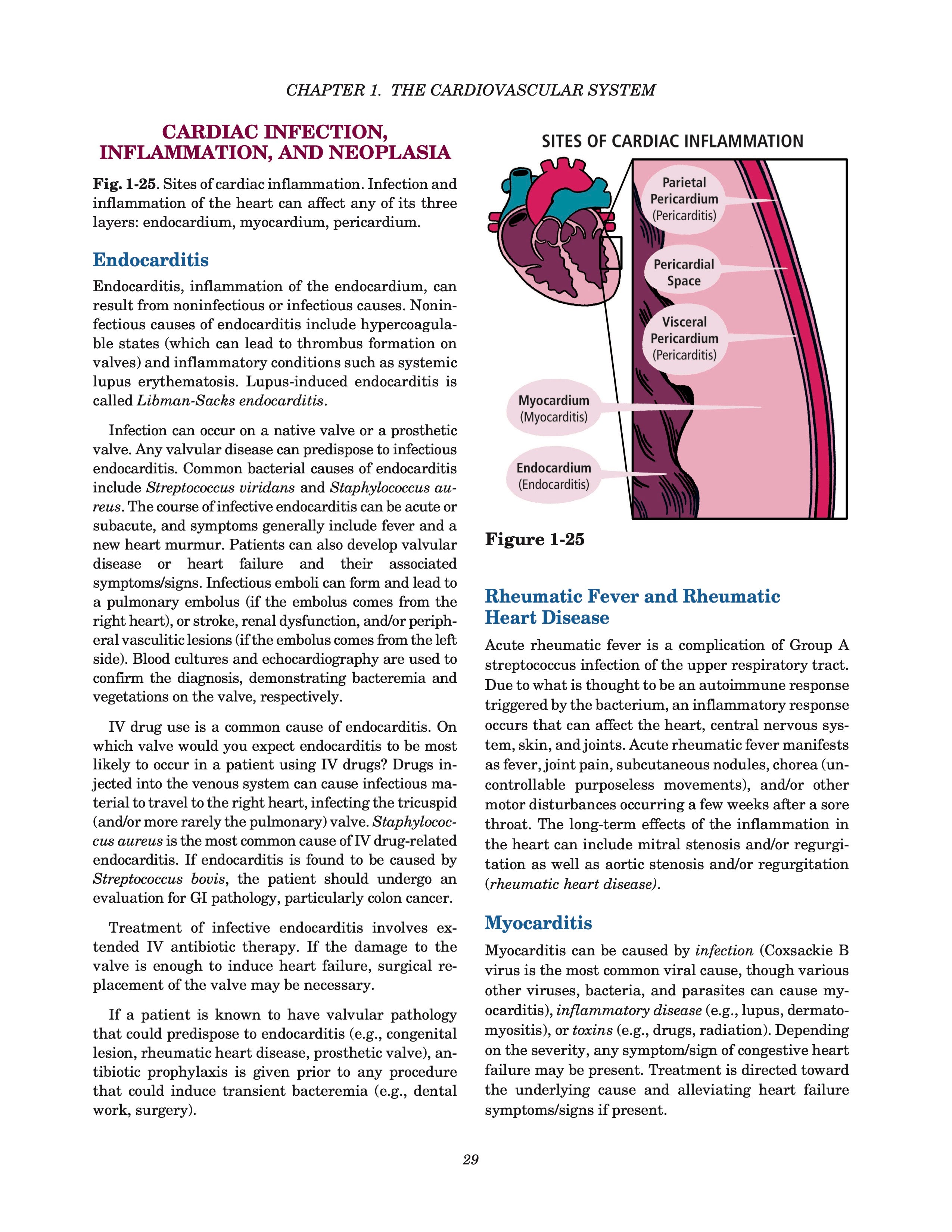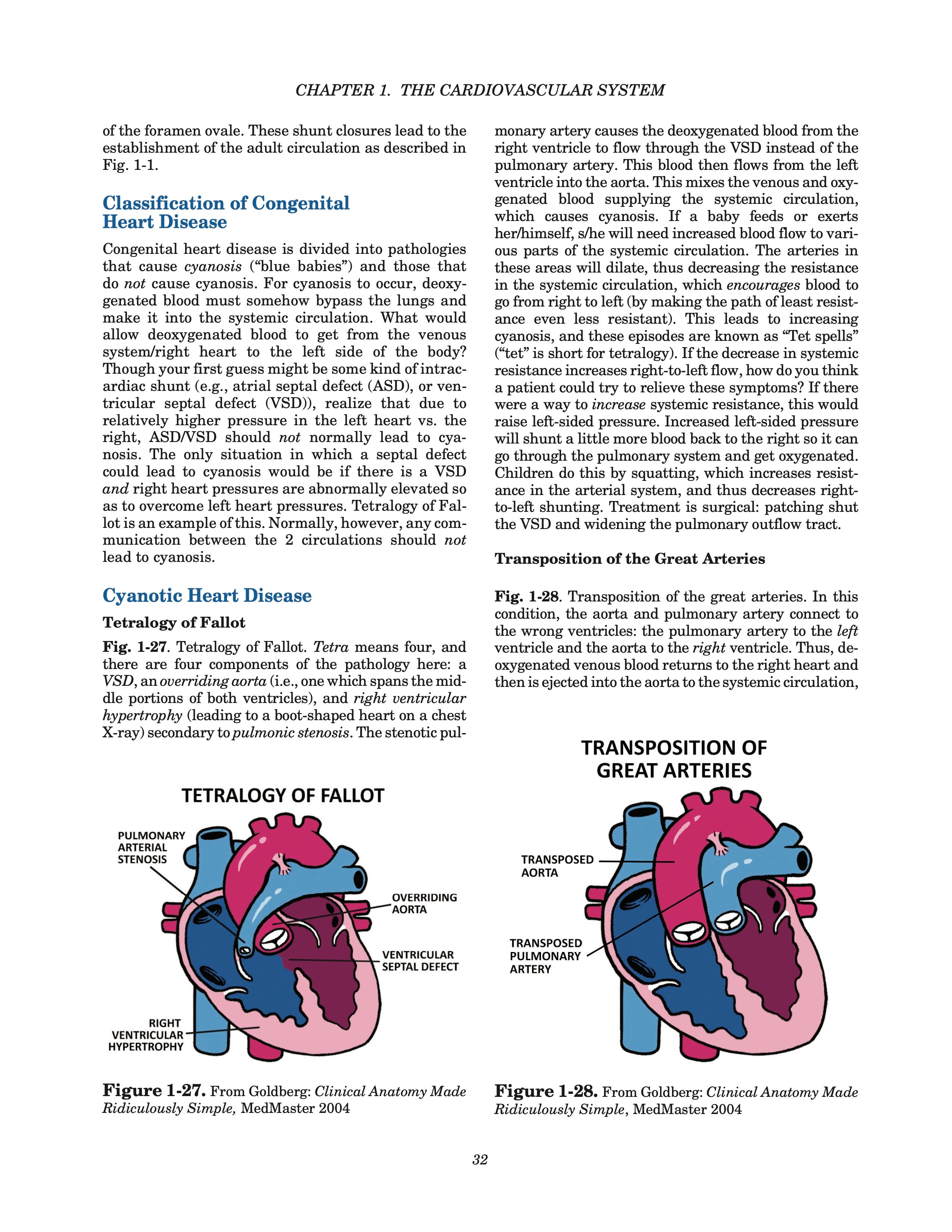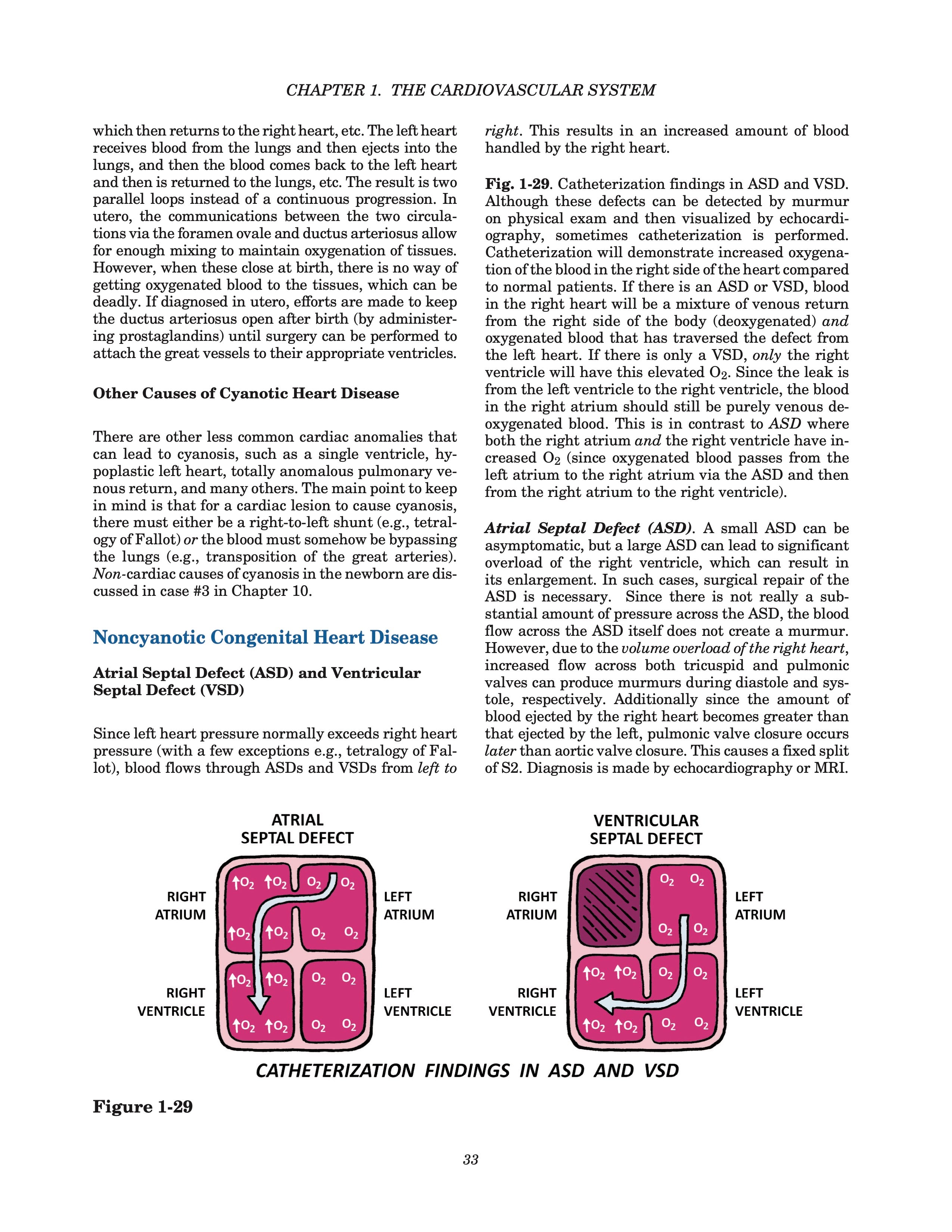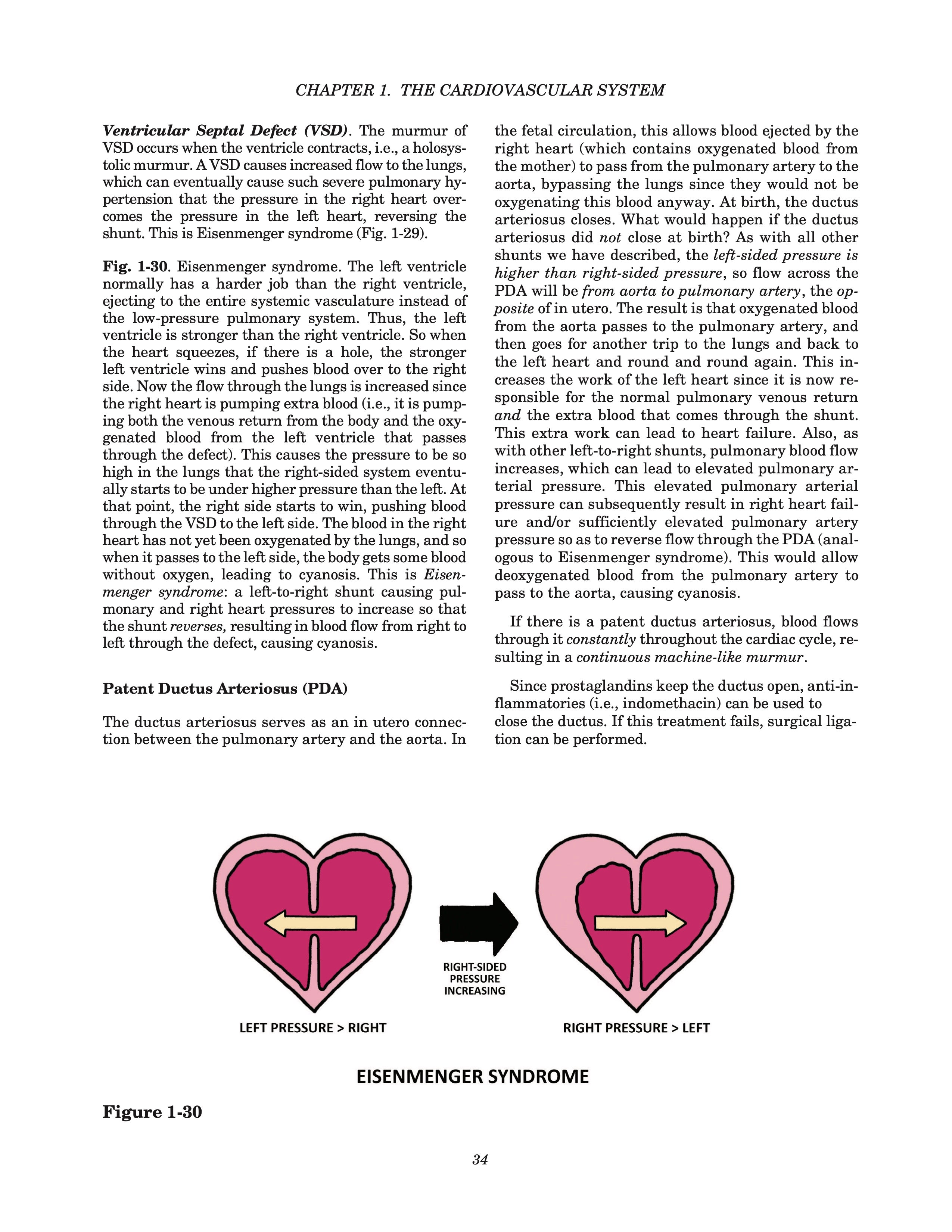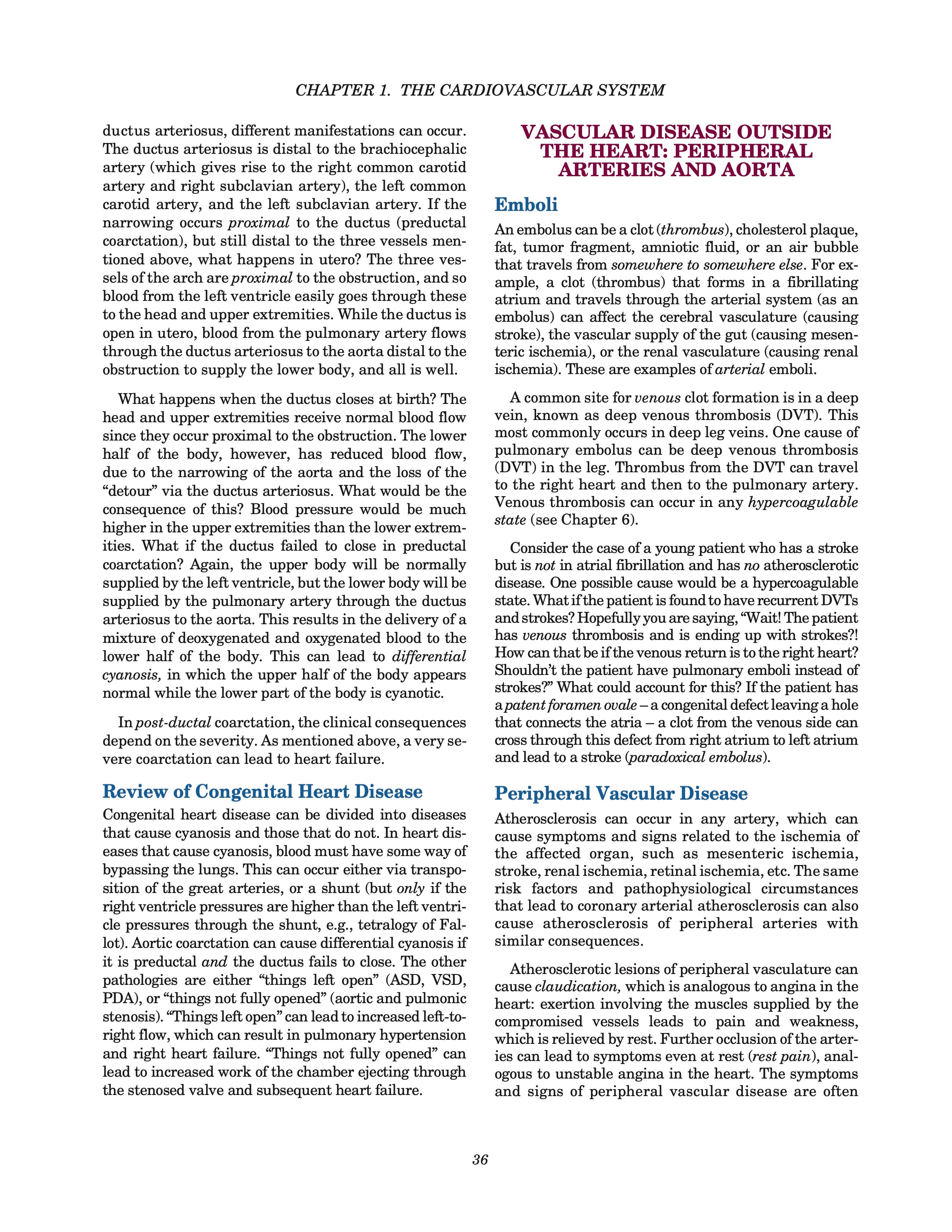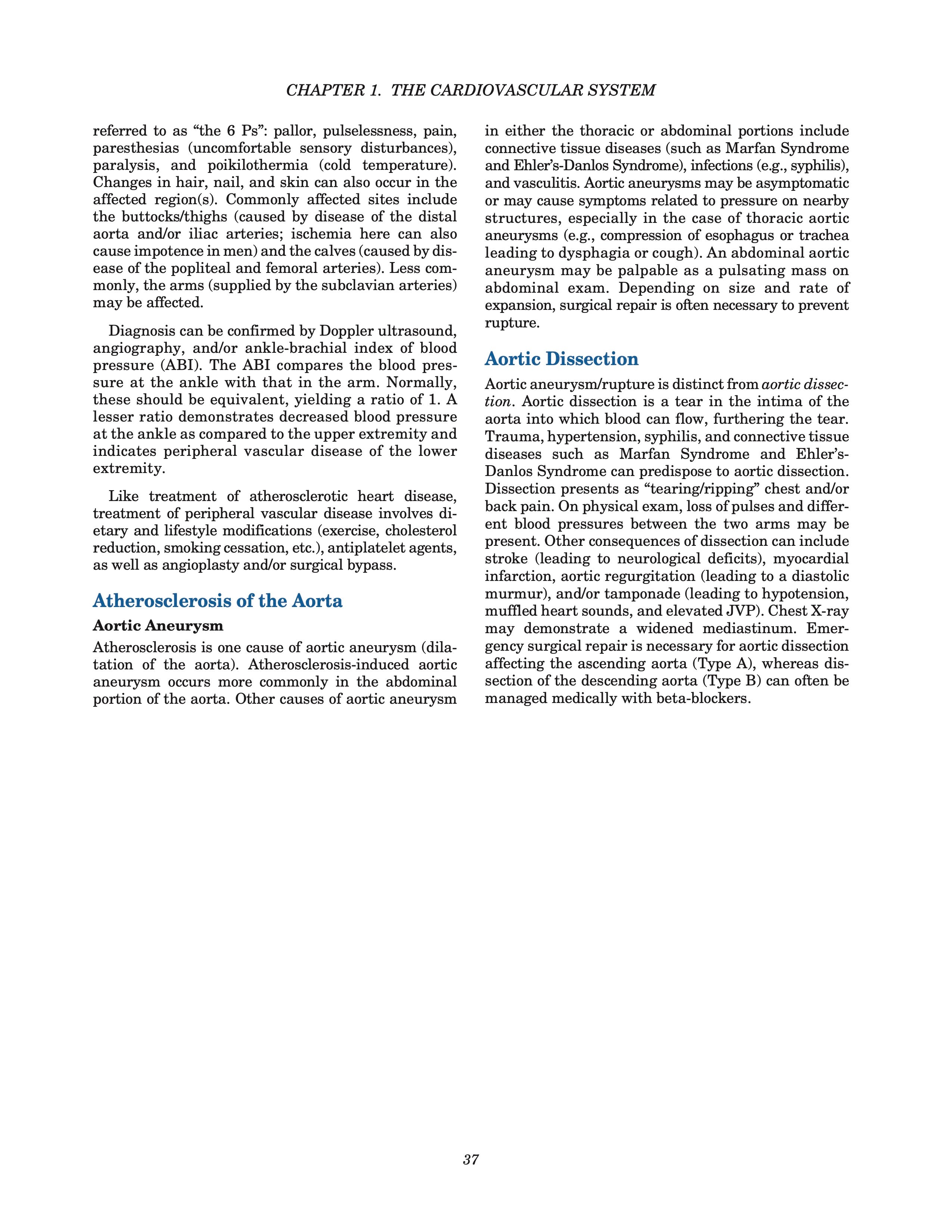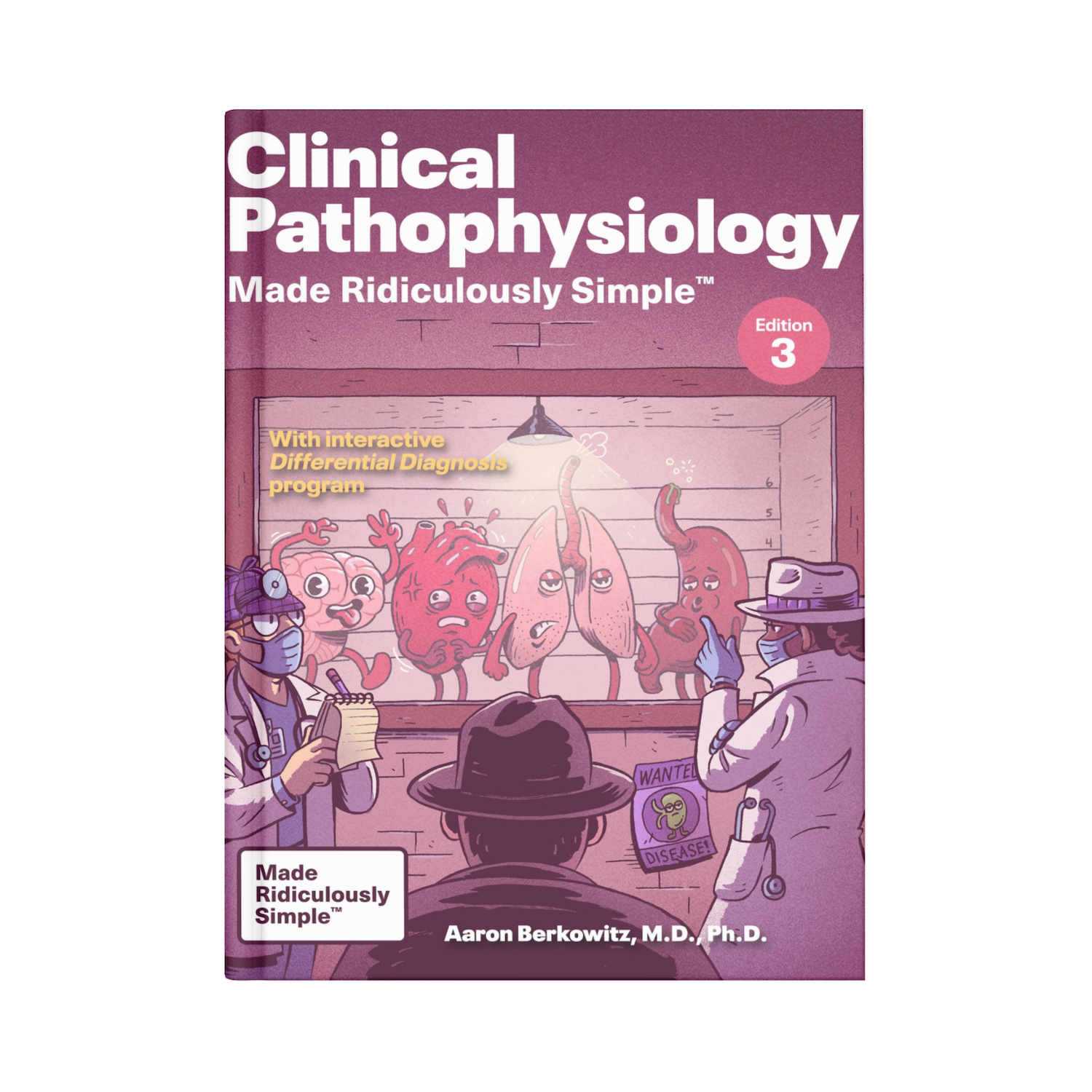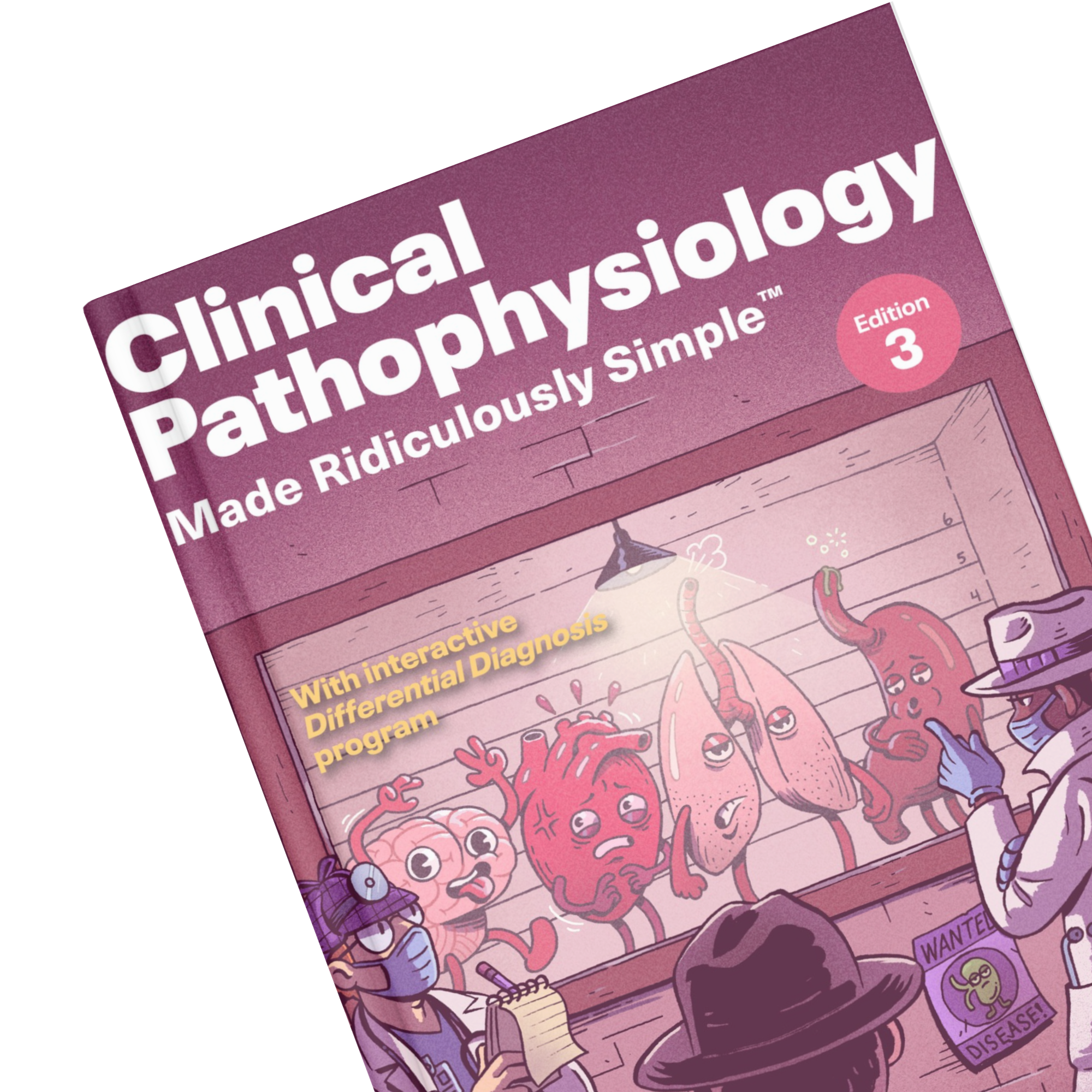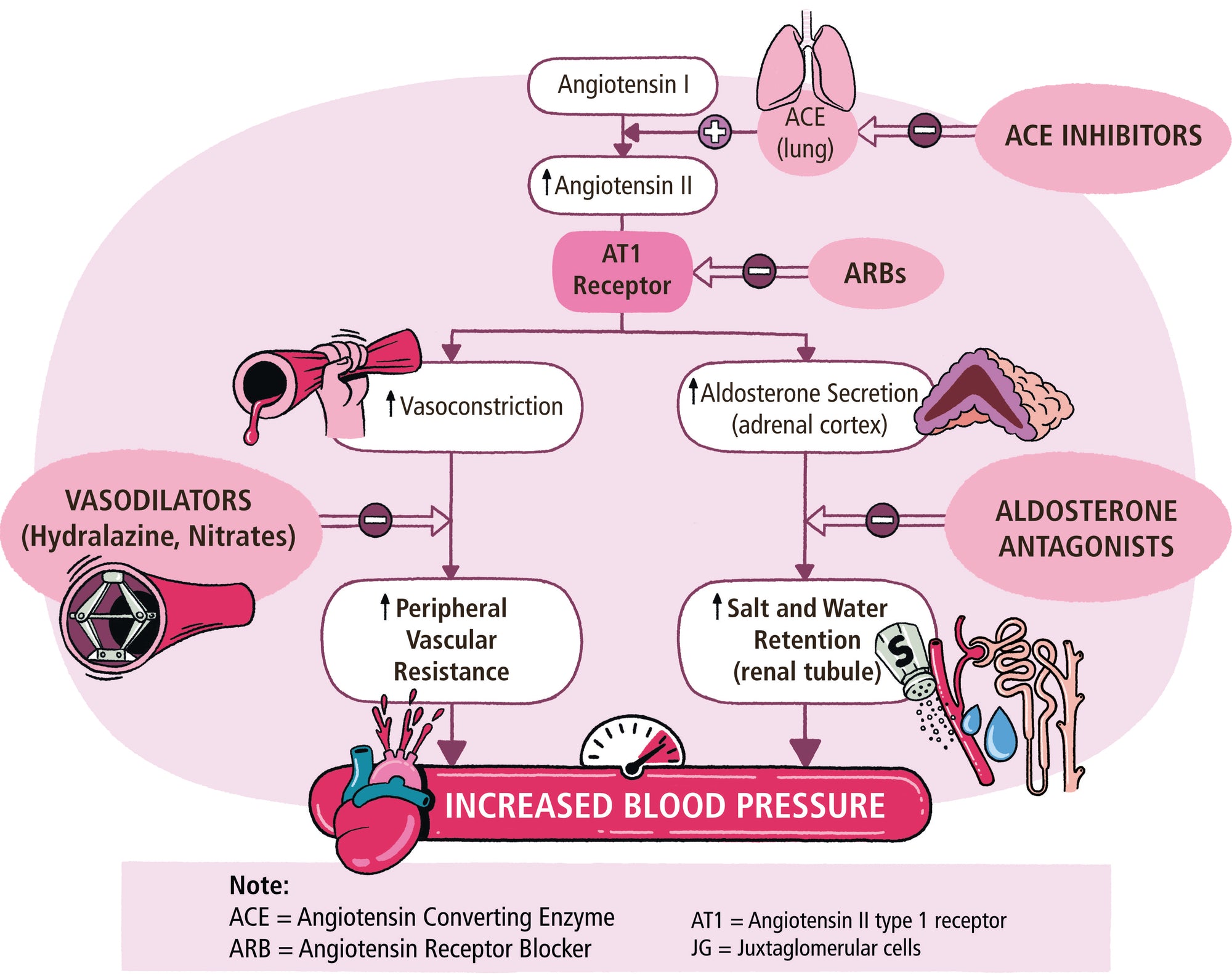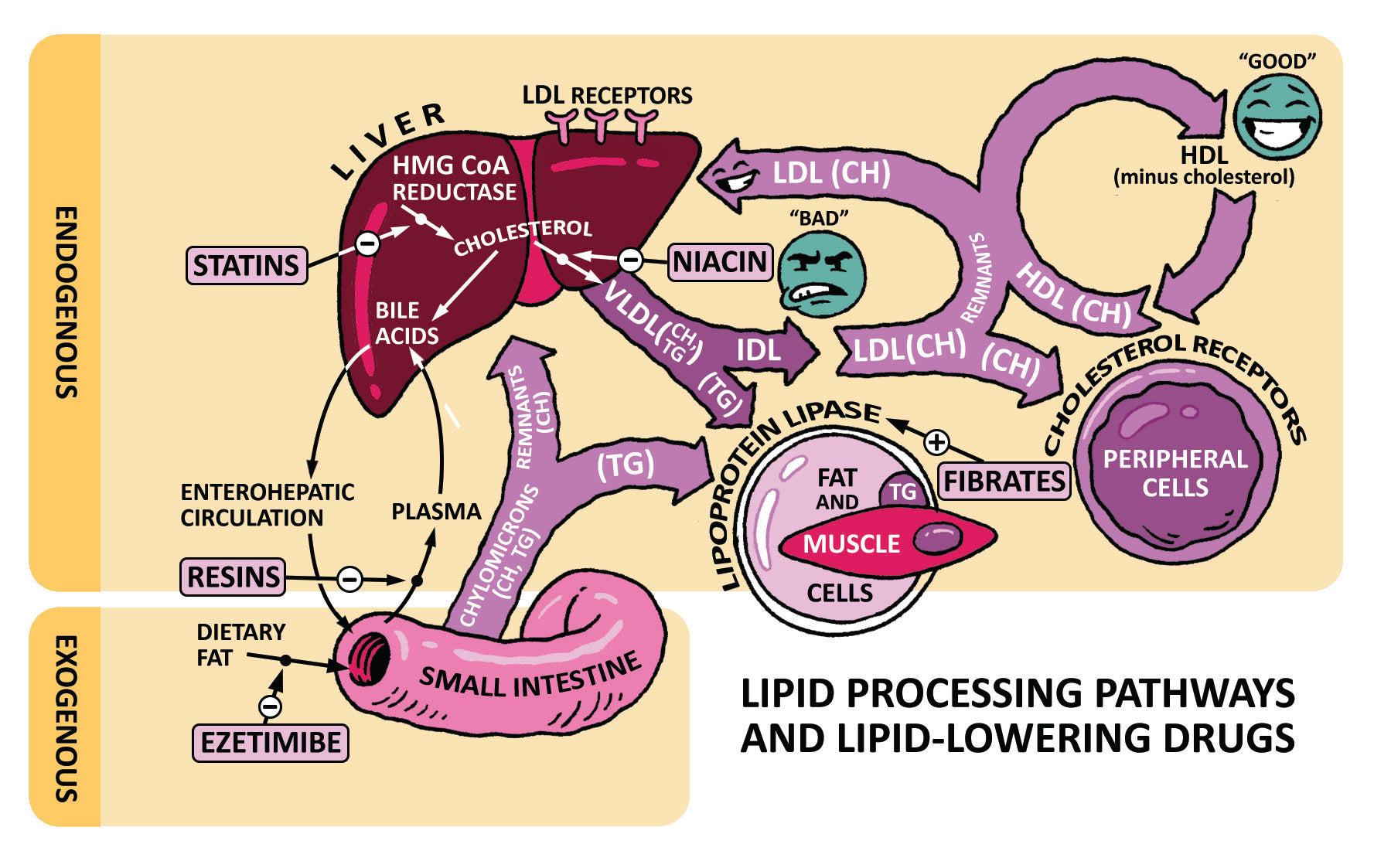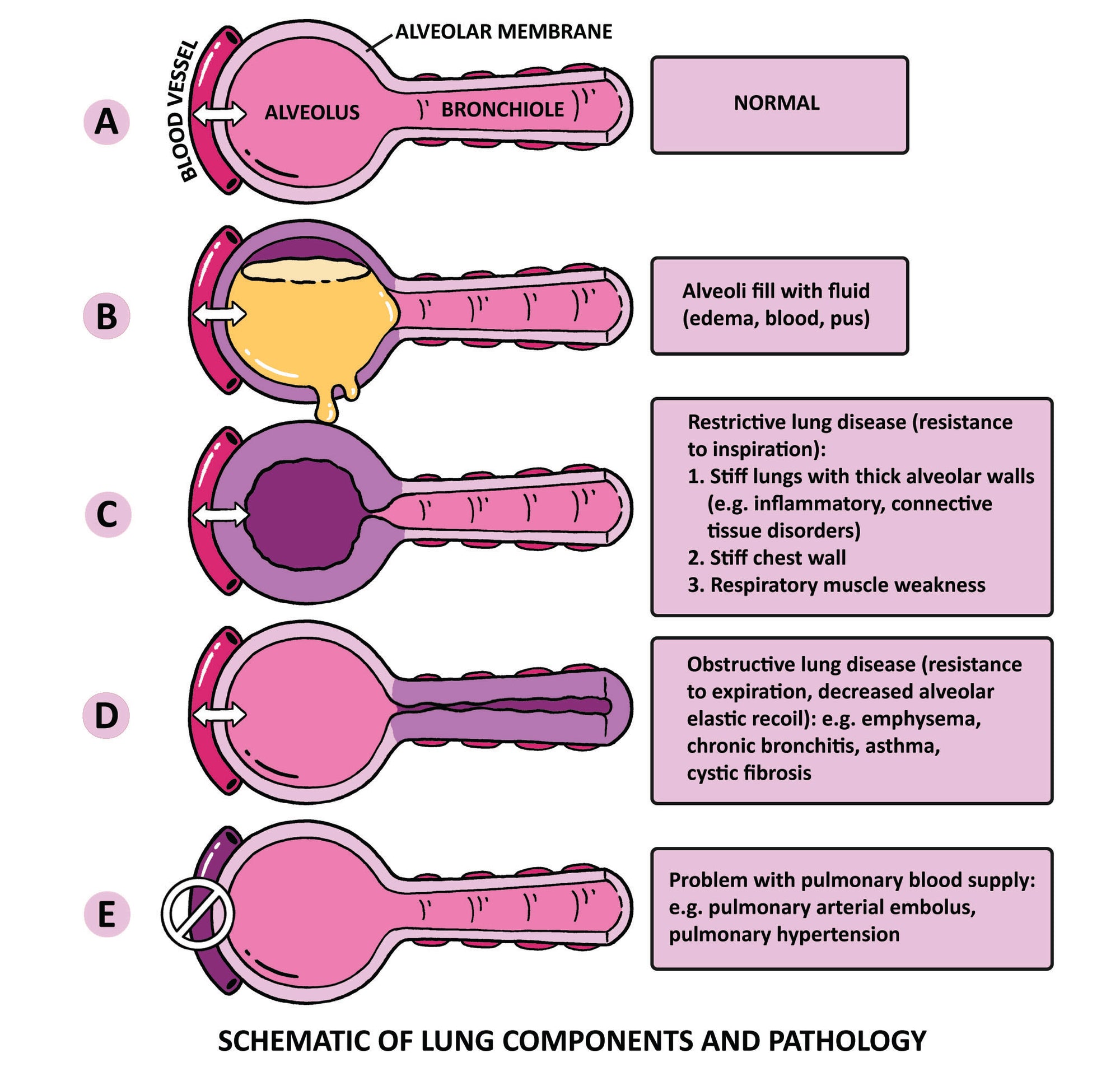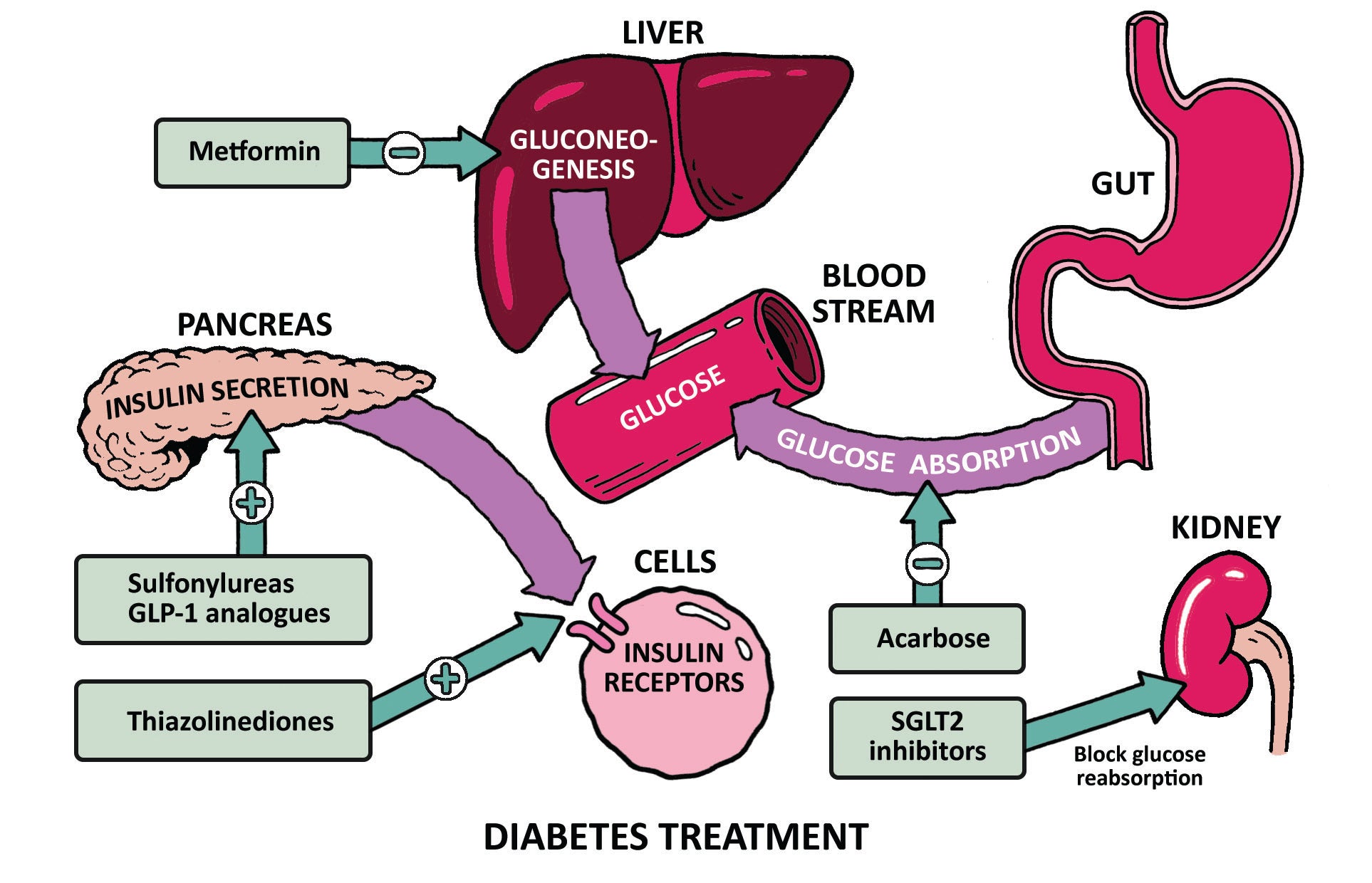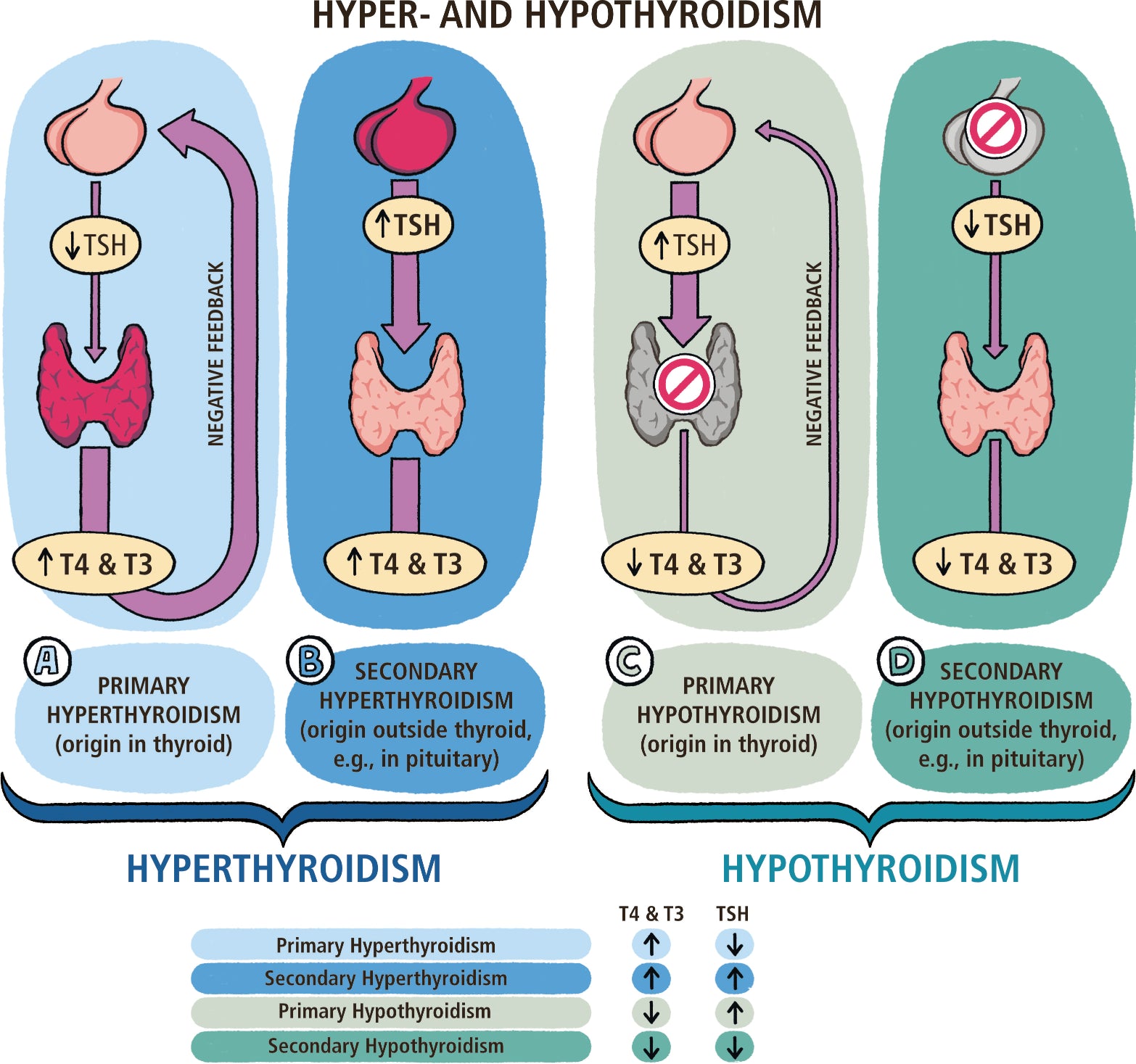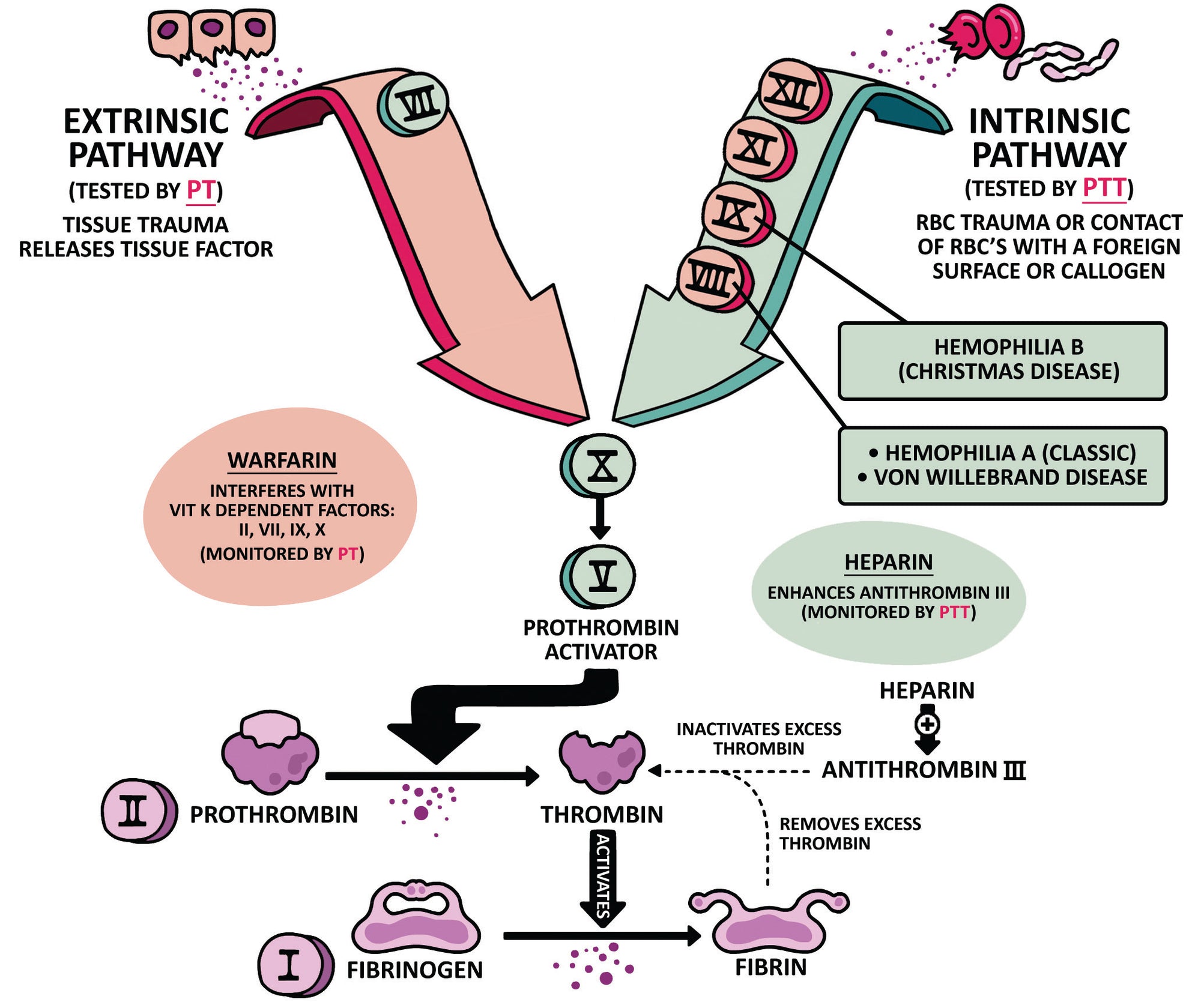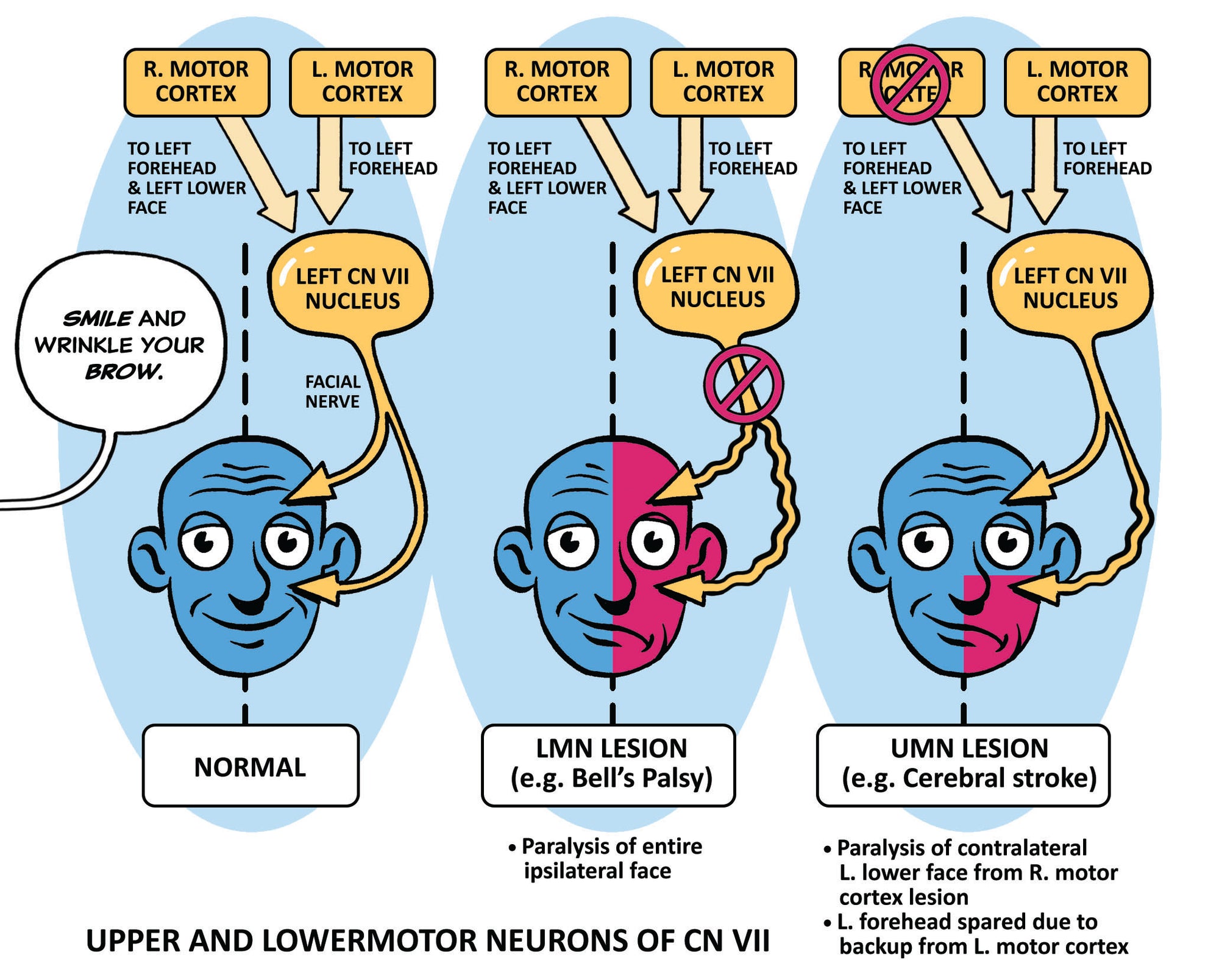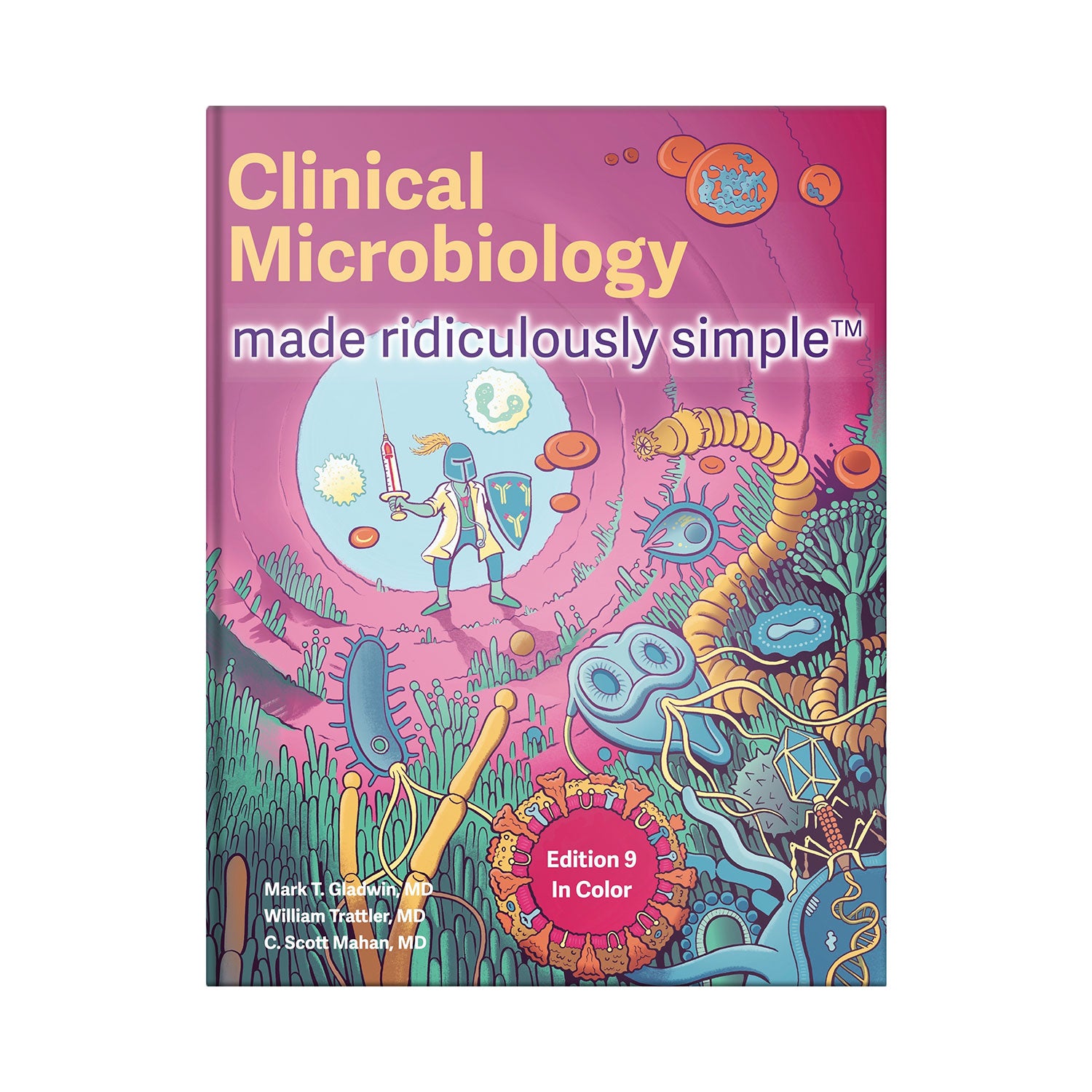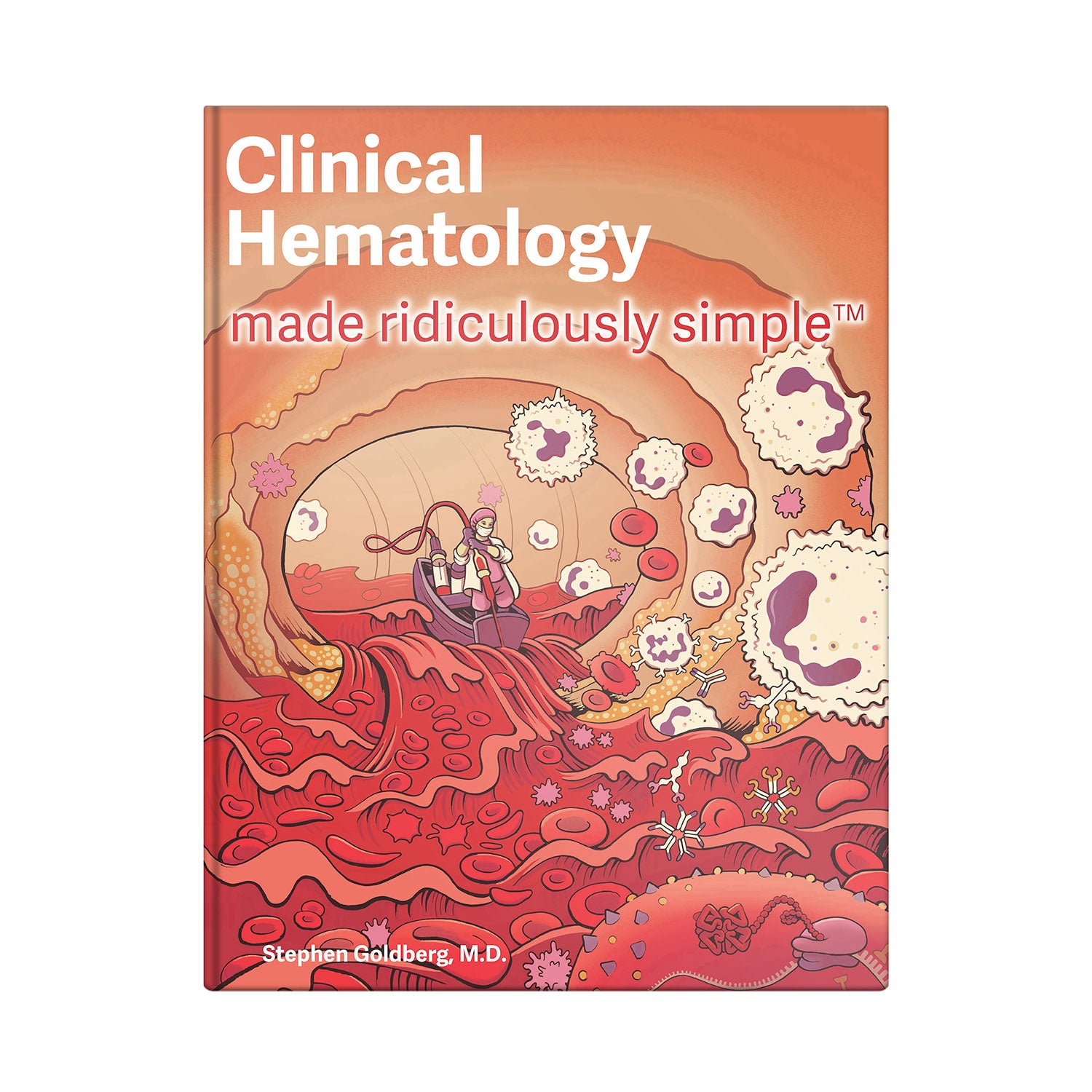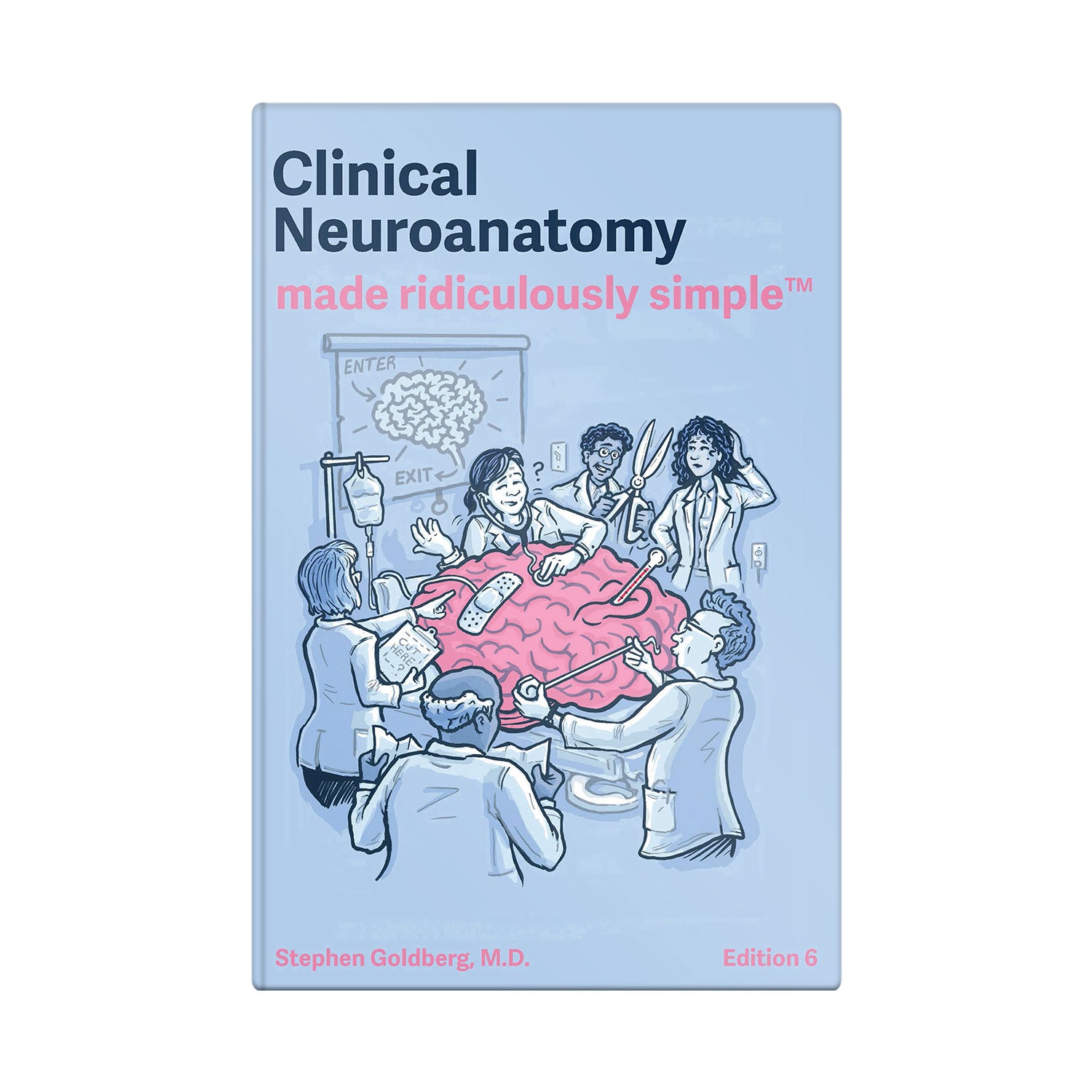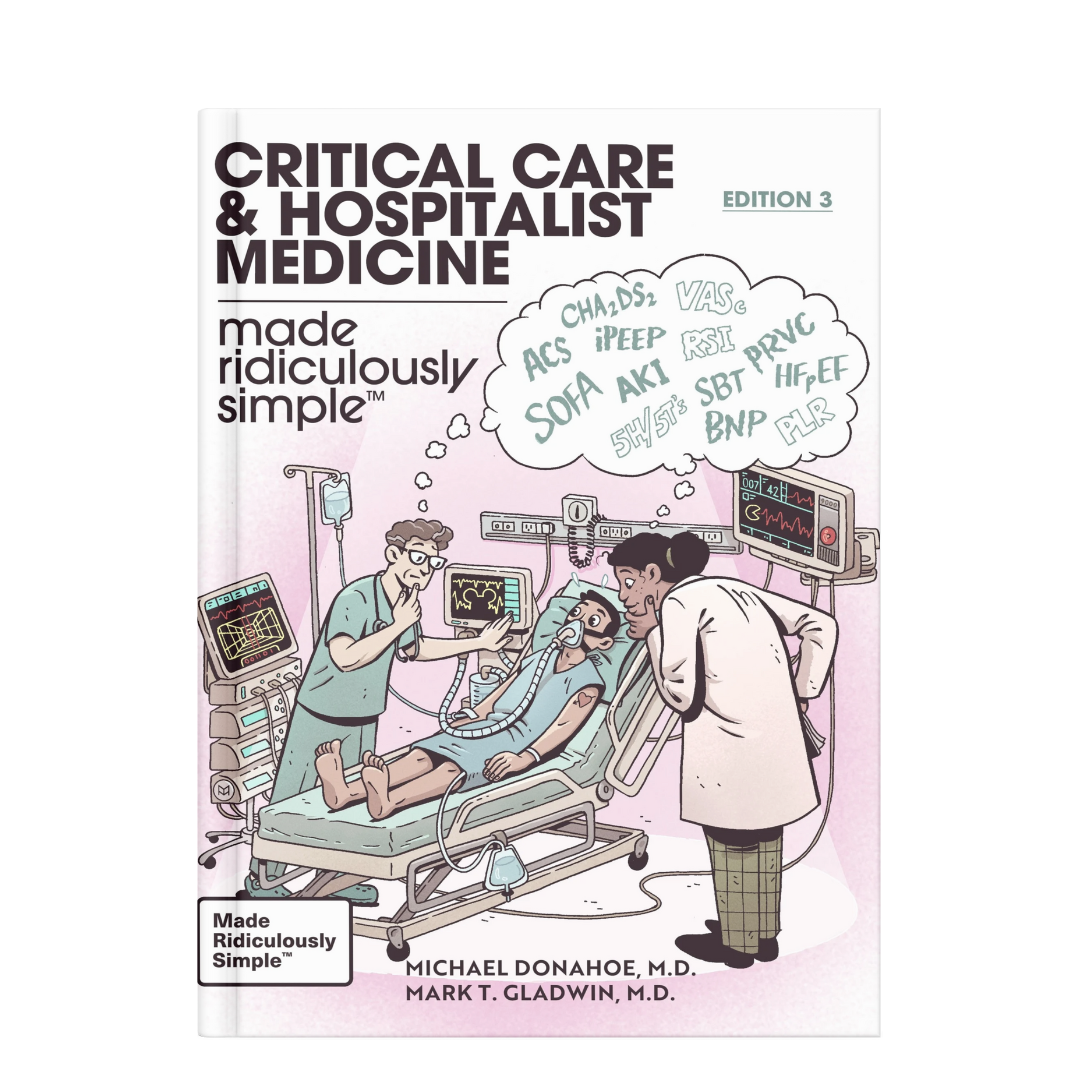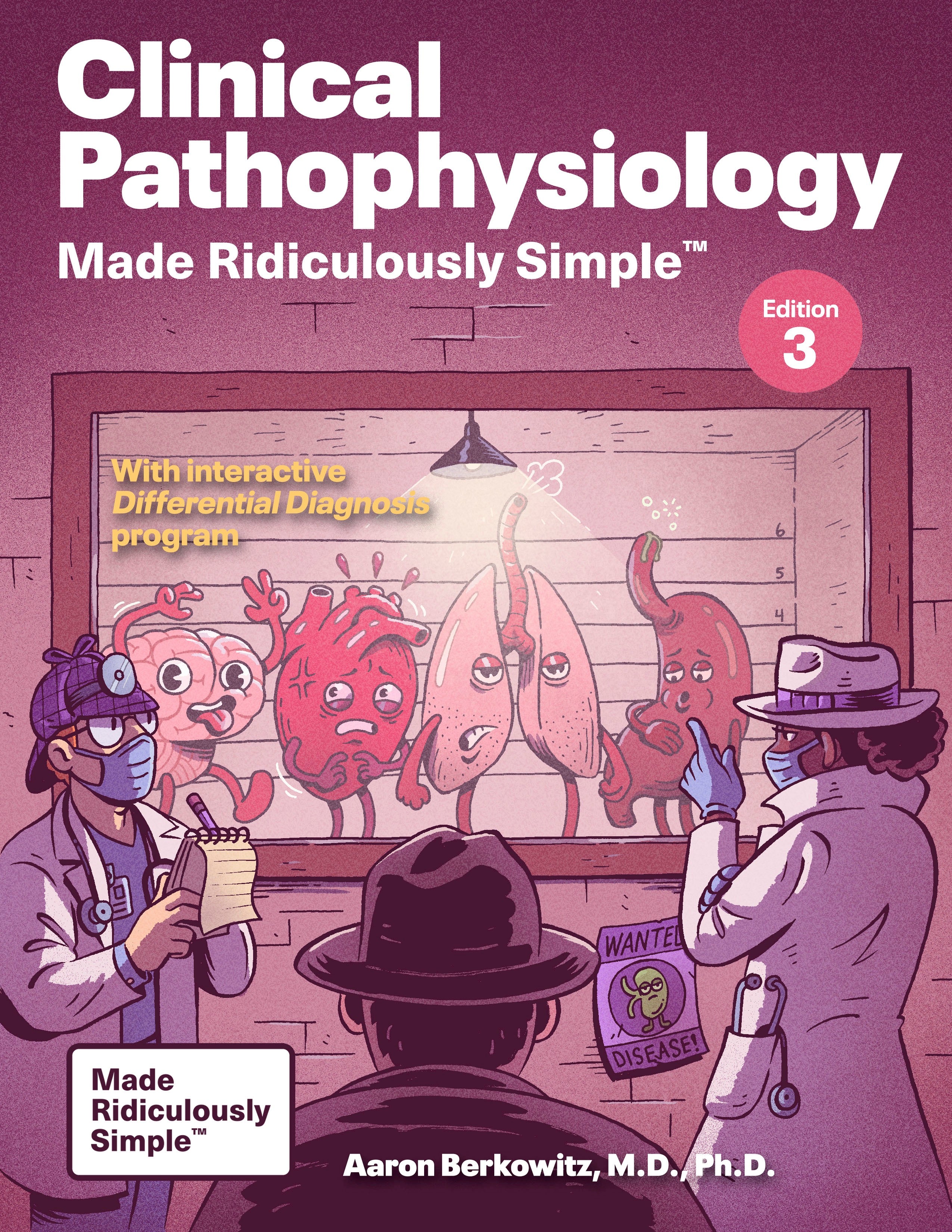
Clinical Pathophysiology Made Ridiculously Simple
Also available on
Description
NEW COLOR EDITION!!!
MASTER CLINICAL UNDERSTANDING WITH THIS UPDATED COLOR EDITION OF CLINICAL PATHOPHYSIOLOGY MADE RIDICULOUSLY SIMPLE! EVEN IF YOU HAVE THE PREVIOUS EDITION, THIS EXTENSIVE UPDATE WILL BRING YOU TO THE NEXT LEVEL OF MEDICINE!
A few tiny specimens of what you can expect in this completely revised edition:
- Newly revised Cardiovascular System with latest treatments and brand new topics such as Bendopnea, Chest X-Ray and Echocardiogram Findings in Heart Failure, HFpEF & HFrEF, Newest Treatments for Valvular Disorders Including TAVR and TAVI, Distinctions within EKG/ECG Readings To “Up” Your Diagnosis Capabilities, Treatment of Tachyarrhythmias, Brand New Section on the Heart’s Vasculature: Angina and Myocardial Infarction Treatment, Knowing Your STEMI’s vs. NTEMI’s
- Brand New Pulmonary System topics such as Diseases of Pulmonary Vasculature, Diagnostic Labs and Imaging Analysis, MECHANICAL VENTILATION, Extensive Understanding to Lung Auscultation
- Newly updated Renal System topics such as Urinalysis, Greater Depth to Acute Kidney Injury, Chronic Kidney Disease, and Acid/Base Pathophysiology Understanding
- Newly added depth to GI lab readings and imaging, new topics related to Hepatorenal Syndrome and Hepatic Encephalopathy
- Newly added Endocrinology Section on monitoring LFT’s and CBC while on endocrine related medications and BRAND NEW section on Treatment of Diabetes Mellitus
- Newly Added Hematologic Disorders, their treatments, and updated treatments to previously discussed Hematologic Disorders
- Completely new facelift to EVERYTHING Neurology
- New updated section on diagnostics and Immunosuppressive/Immunomodulatory Drugs in Rheumatologic Disorders
- Newly added section on diagnostics and treatment for Prostate Cancer
Provides a conceptual overview of pathophysiology, mechanisms of disease, and clinical reasoning hand-in-hand in a brief, clear, highly practical book designed to ease the transition from the basic sciences to the clinical years. Particularly useful in the transition from the second to the third year of medical school, but also very helpful to nurses, nurse practitioners, physician assistants and other health care professionals. Shows the clinical relevance of the basic sciences through overall principles and understanding. Companion Digital Download of Differential Diagnosis program (Win/Mac), showing the interpretation of common lab tests and patient symptoms and signs. Available on MedMaster's website.
Companion Digital Download of Differential Diagnosis program (Win/Mac), showing the interpretation of common lab tests and patient symptoms and signs.
Excellent Board Review (USMLE Step 1, NCLX-RN, PANCE/PANRE)
REVIEWS
"There are very few books that successfully walk the fine line between information overload and gross oversimplification. Berkowitz's Clinical Pathophysiology Made Ridiculously Simple manages to pull it off admirably well and will be a welcome change for scores of overwhelmed medical students." David E. Newman-Toker, MD, Director, Student Clerkships in Neurology, Johns Hopkins University School of Medicine
"If you read one book during your preclinical years, read this! I've yet to come across a more clear and concise introduction to clinical pathophysiology. This book is a solid foundation for medical, nursing, and pharmacy students who want to understand human disease and treatments from first principles. I recommend it to anyone who aspires to take great care of their patients." Andrew D. Levin, MD/PhD candidate, Harvard Medical School "
A thorough and insightful approach to basic pathophysiology, this book helps its readers develop a strong conceptual foundation of 'how' and 'why' disease happens, a skill that will far outlast memorization done for the boards and even provide a great review for residents and attending physicians." Aarti Sekhar, MD, PGY-2, Radiology, Beth Israel Hospital
"This is absolutely brilliant -- things have never been more clear. It's everything you were supposed to learn in 1st year but didn't quite get, and everything in 2nd year you need for the boards. This is the most clear, well organized review text for the boards I've every seen!" Jasmine Pedroso, 2nd Year Medical Student, UCLA Geffen School of Medicine
Author(s)
Aaron Berkowitz, M.D., PH.D.
Dr. Aaron Berkowitz is a leading voice in medical education, neurology, and global health. He previously served on the faculty of Harvard Medical School, where he designed and taught the preclinical neuroanatomy/neurology course and was an associate neurology clerkship director, while serving as director of global neurology at Brigham and Women's Hospital. His work as a neurology educator has been recognized by the Residency Teacher of the Year Award from the Harvard Neurology Residency program in both 2018 and 2019 and the O’Hara Excellence in Preclinical Teaching award from Harvard Medical School in 2016. He is a frequent case discussant on the popular Clinical Problem Solvers podcast. As Health and Policy Advisor to Partners In Health, Senior Specialist Consultant to Doctors Without Borders, he has worked tirelessly to improve access to neurologic care and education worldwide. This work has been recognized by the Mridha Humanitarian Award from the American Brain Foundation in 2018 and the Viste Patient Advocate of the Year Award from the AAN in 2019. He has published over 70 peer-reviewed articles, several book chapters including the neurology chapter for the Oxford Manual of Humanitarian Medicine, and four books including Clinical Pathophysiology Made Ridiculously Simple (MedMaster), Clinical Neurology and Neuroanatomy: A Localization-Based Approach (McGraw-Hill) and One by One by One: Making a Small Difference Amid a Billion Problems (HarperCollins) about his work as the only neurologist in Haiti. He recently joined the founding faculty of the Kaiser Permanente School of Medicine in Pasadena, CA. In his free time, he enjoys hiking, backpacking, yoga, and music.
Details
Pages: 224
Publication: Edition 3 (July 29, 2025)
Language: English
Digital: Includes interactive download of Differential Diagnosis (WIN/MAC)
ISBN: 9781962445184 eISBN: 9781962445207
Table of contents
CHAPTER 1. THE CARDIOVASCULAR SYSTEM
- The Basic Circulation
- Heart Failure
- Diseases of the Heart Muscle
- The Cardiomyopathies
- The Valves and Their Diseases
- Stenosis and Regurgitation
- Diseases of the Electrical System
- Arrhythmias
- Diseases of the Heart's Vasculature
- Angina and Myocardial Infarction
- Vascular Disease Outside the Heart
- Peripheral Arteries and Aorta
- Lipids and Lipid-Lowering Drugs
- Vasculitis
- Hypertension
- Cardiac Infection, Inflammation, and Neoplasia
- Endocarditis
- Rheumatic Fever and Rheumatic Heart Disease
- Myocarditis
- Pericarditis
- Congenital Heart Disease
CHAPTER 2. THE PULMONARY SYSTEM
- Micro-anatomical components of the pulmonary system: sac, membrane, and blood vessel
- Obstructive and restrictive lung disease
- Pulmonary function tests
- Pulmonary physical exam
- Pulmonary hypertension
- Respiratory infections
- Lung cancer
- Diseases of the pleura and pleural space
CHAPTER 3. THE RENAL SYSTEM
- Prerenal, intrinsic renal, and post-renal failure
- Chronic renal failure
- Urinary tract infection (UTI) and urinalysis
- Tumors of the urinary tract
- Fluids and electrolytes
- Hypernatremia and hyponatremia
- Hyperkalemia and hypokalemia
- Acid-base pathophysiology
CHAPTER 4. THE GASTROINTESTINAL SYSTEM
- Diseases of the esophagus
- Diseases of the stomach
- Diseases of the small intestine
- Diseases of the large Intestine
- Upper and lower GI bleeding
- Inflammatory bowel disease (IBD)
- Crohn's disease and ulcerative colitis
- Diseases of the liver and gall bladder
- Diseases of the pancreas
- Approach to abdominal pain
CHAPTER 5. THE ENDOCRINE SYSTEM
- General principles
- Thyroid diseases
- Hyperthyroidism
- Hypothyroidism
- Thyroiditis
- Thyroid nodules and thyroid cancer
- Adrenal gland
- Cushing's syndrome
- Adrenal insufficiency
- Hyperaldosteronism and hypoaldosteronism
- Multiple Endocrine Neoplasia (MEN)
- Pituitary Gland
- Diseases of the anterior pituitary
- Diseases of the posterior pituitary
- The endocrine pancreas and glucose regulation
- Diabetes mellitus
- Hypoglycemia
- Calcium, the parathyroids, and bone
- Hypercalcemia
- Hypocalcemia
- Diseases of bone -- Osteopetrosis -- Osteoporosis and osteomalacia -- Paget's disease -- Infection of bone: osteomyelitis -- Tumors of bone
CHAPTER 6. THE HEMATOLOGIC SYSTEM
- Red Blood Cells
- Anemia
- Polycythemia
- White blood cells and immunology
- Hypersensitivity
- Immunodeficiency
- Hematologic malignancies
Platelets and the clotting cascade
- Hypocoagulable states: tendency to bleed
- Hypercoagulable states: tendency to clot
CHAPTER 7. THE NERVOUS SYSTEM
Review of neuroanatomy and introduction to localization
- Motor and sensory pathways
- Brainstem and cranial nerves
- Cerebellum and basal ganglia
- Diseases of the brain
- Mental status changes: dementia and delirium
- Seizures
- Elevated intracranial pressure
- Intracranial infection and bleeding -- CSF examination
- CNS tumors
- Stroke
- Parkinson's disease
- Multiple sclerosis
- Diseases of the spinal cord
- Diseases of lower motor neurons, neuromuscular junction, and muscle
CHAPTER 8. RHEUMATOLOGY
- Rheumatologic disease
- Treatment of autotoimmune diseases:
- Immunosuppressives and anti-inflammatories
- Joint disease
- Arthritis -- Rheumatoid arthritis -- Osteoarthritis -- Spondyloarthritis -- Infectious arthritis -- Gout and pseudogout
CHAPTER 9. MALE AND FEMALE REPRODUCTIVE SYSTEMS
- Male reproductive organ pathophysiology
- Prostate (prostatitis, benign prostatic hypertrophy, prostate cancer)
- Testicles
- Erectile dysfunction
- Female reproductive organ pathophysiology
- The menstrual cycle, oral contraceptives, and amenorrhea
- Inflammation and infection of the female genital tract
- Neoplasia of the female genital tract
- Endometriosis
- Polycystic ovary syndrome
- Diseases of the breast
- Infertility
CHAPTER 10. CLINICAL CASES
INDEX

